Soft neutral walls have long whispered tranquility, yet 2025 takes Zen room ideas even further — the year’s leading trend-spotters see homeowners fusing Japanese serenity with Scandinavian warmth, prioritizing tactile wood, stone, and plant life to reclaim calm from relentless screens. In practice, that means decluttered corners, nature-honoring accents, and sensory layers that slow the pulse the moment you step inside. Explore how these 25 fresh concepts can help you carve out a restorative retreat — whatever size of home, budget, or lifestyle you’re working with.
1. Minimalist Zen Room in a Soft-Neutral Palette
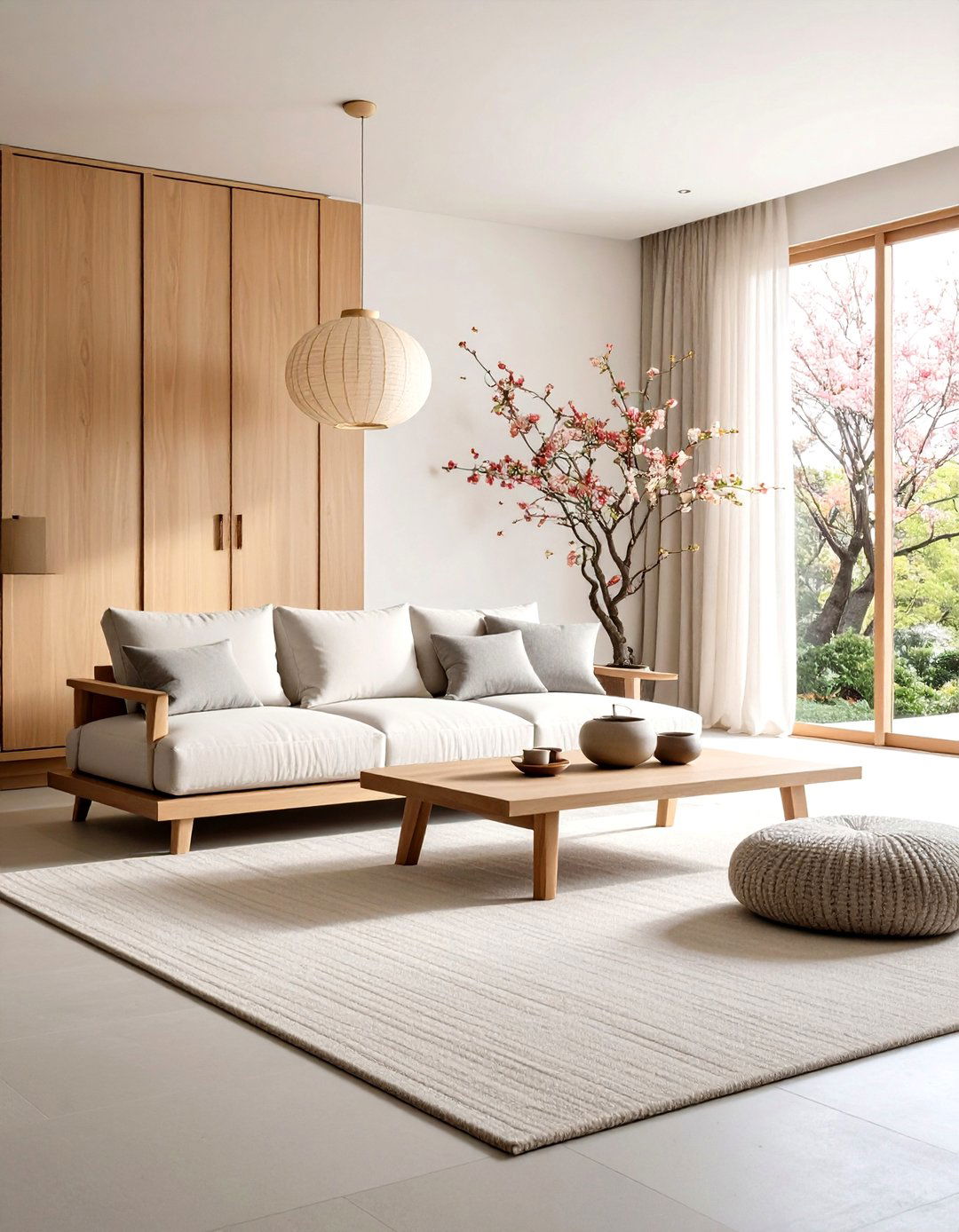
A clear mind loves uncluttered surroundings, so begin your Zen room journey with a pared-back scheme of warm whites, dove grays, or creamy taupes. Remove visual noise — store seldom-used items behind smooth cabinetry, keep furniture low-profile, and let one sculptural floor cushion anchor the space. Natural light gains star billing when walls reflect, not absorb, sunlight, so trade heavy drapes for simple cotton blinds. A single air-purifying plant and bamboo tray can finish the look, demonstrating that tranquility often thrives on subtraction rather than addition.
2. Nature-Infused Zen Room Bringing the Outdoors In
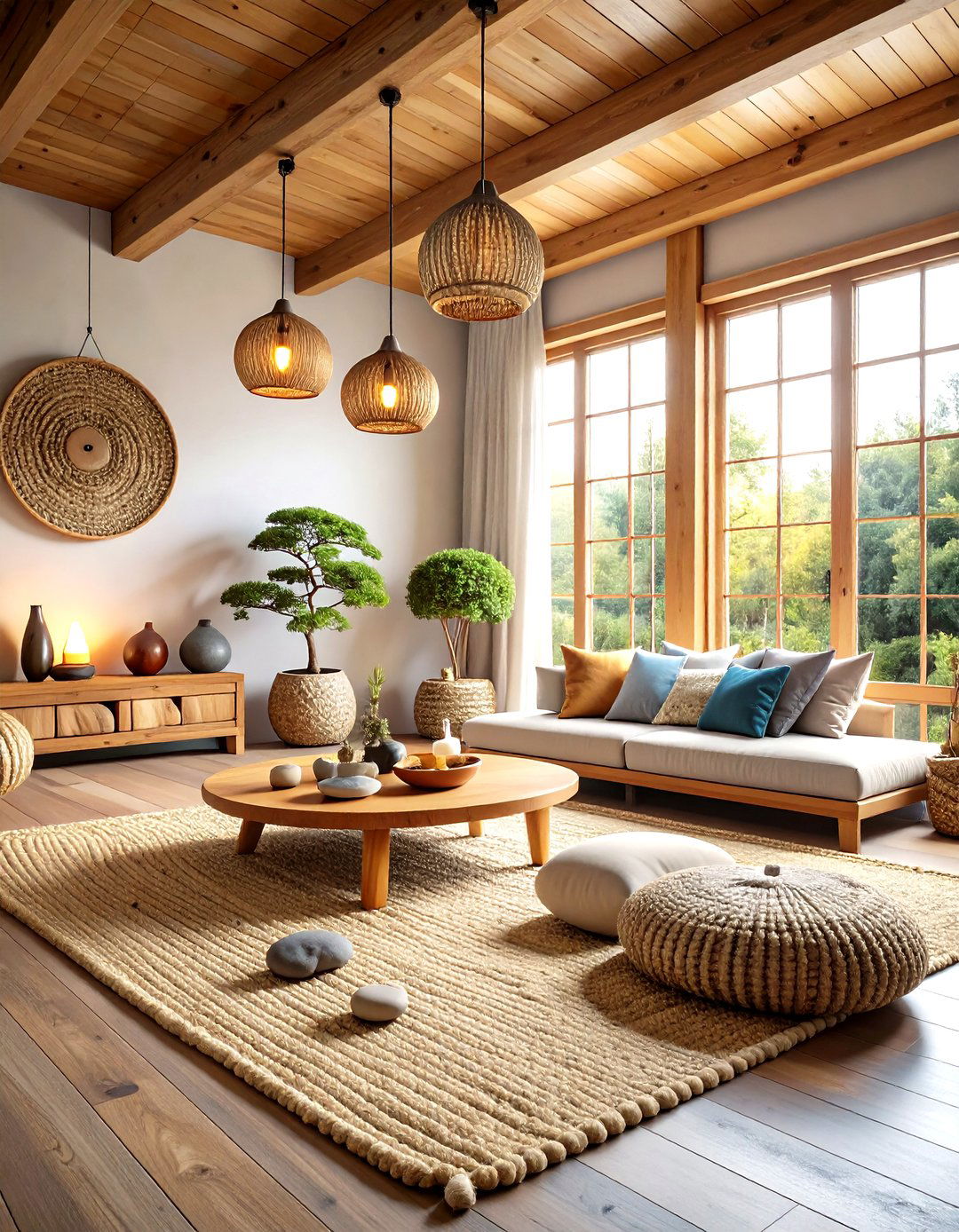
A sun-soaked corner becomes a pocket sanctuary when you invite raw nature indoors. Consider clustering river stones at the base of a bonsai, laying a woven jute rug underfoot, and hanging a simple branch mobile overhead. Gentle earth scents from cedar or vetiver incense echo a forest floor, while a tabletop Zen garden lets you rake meditative patterns whenever tension builds. By mimicking nature’s textures — smooth, porous, and organic — you signal the nervous system to slow down and match the steady rhythms of the outdoors.
3. Low Platform Seating for Grounded Calm

Sitting close to the floor instantly stabilizes posture and mood, making a low platform sofa or symmetrically placed zabuton cushions ideal for a Zen room. Opt for oak, beech, or reclaimed wood bases topped with firm cotton padding; the tactile grain under hand reminds guests of natural origins. Surround the seat with negative space: no tall furniture, minimal artwork, and hidden charging outlets. With eye level lowered, ceiling height feels expansive, amplifying the sensation of breathing room without requiring square footage.
4. Japandi-Style Zen Room Celebrating 2025’s Calm Trend
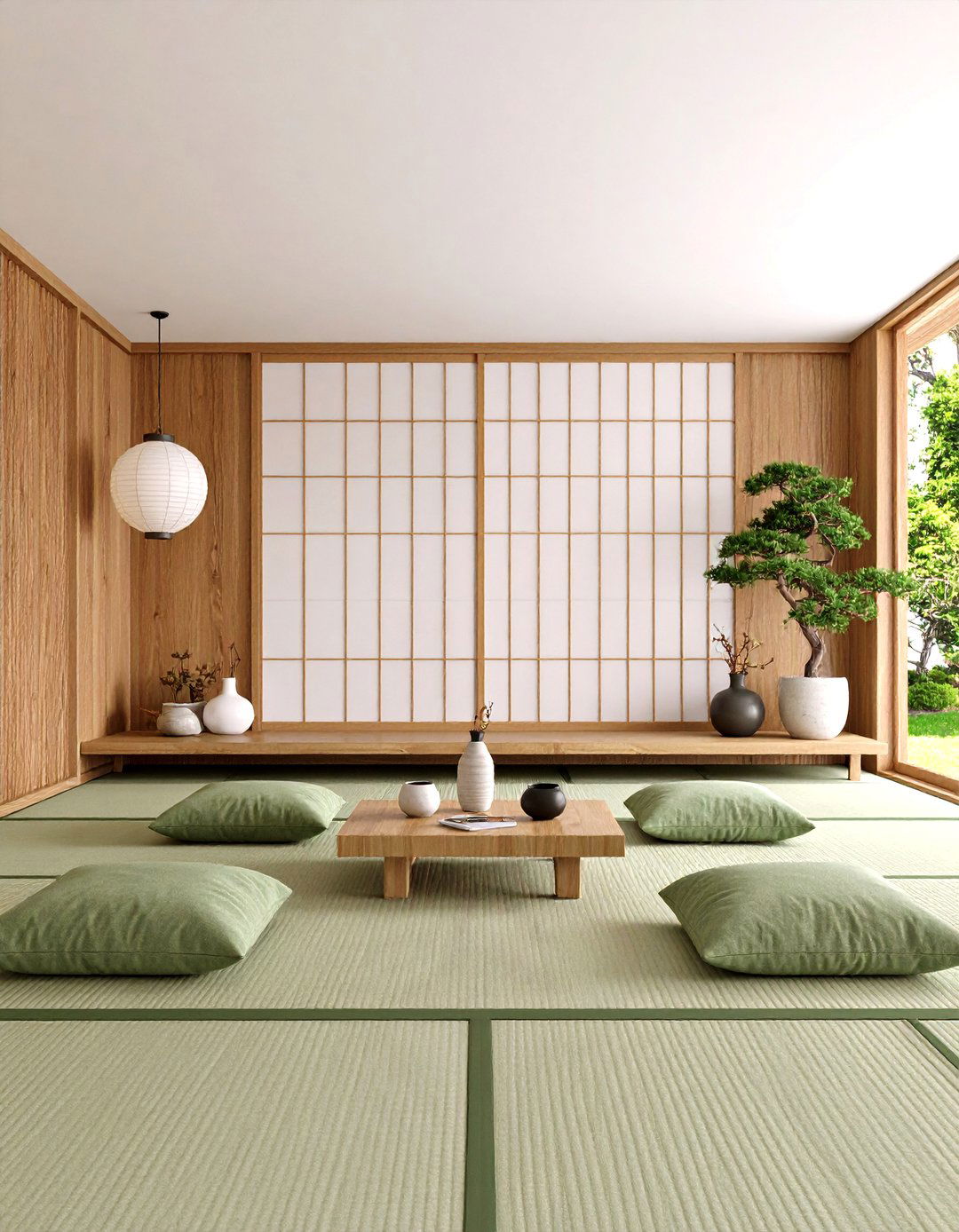
Surprisingly, blending Japanese minimalism and Scandinavian cosiness — known as Japandi — has emerged as 2025’s poster child for serene interiors. Try ash-wood slatted walls, linen floor pillows in muted sage, and a wool throw draped over a low teak bench. Keep ornamentation purposeful: a single ceramic vessel or hand-thrown mug doubles as décor and daily ritual. The harmony of clean lines and soft textures delivers warmth without clutter, reminding you that simplicity can feel welcoming rather than stark.
5. Light-Filled Zen Room with Sheer Drapes
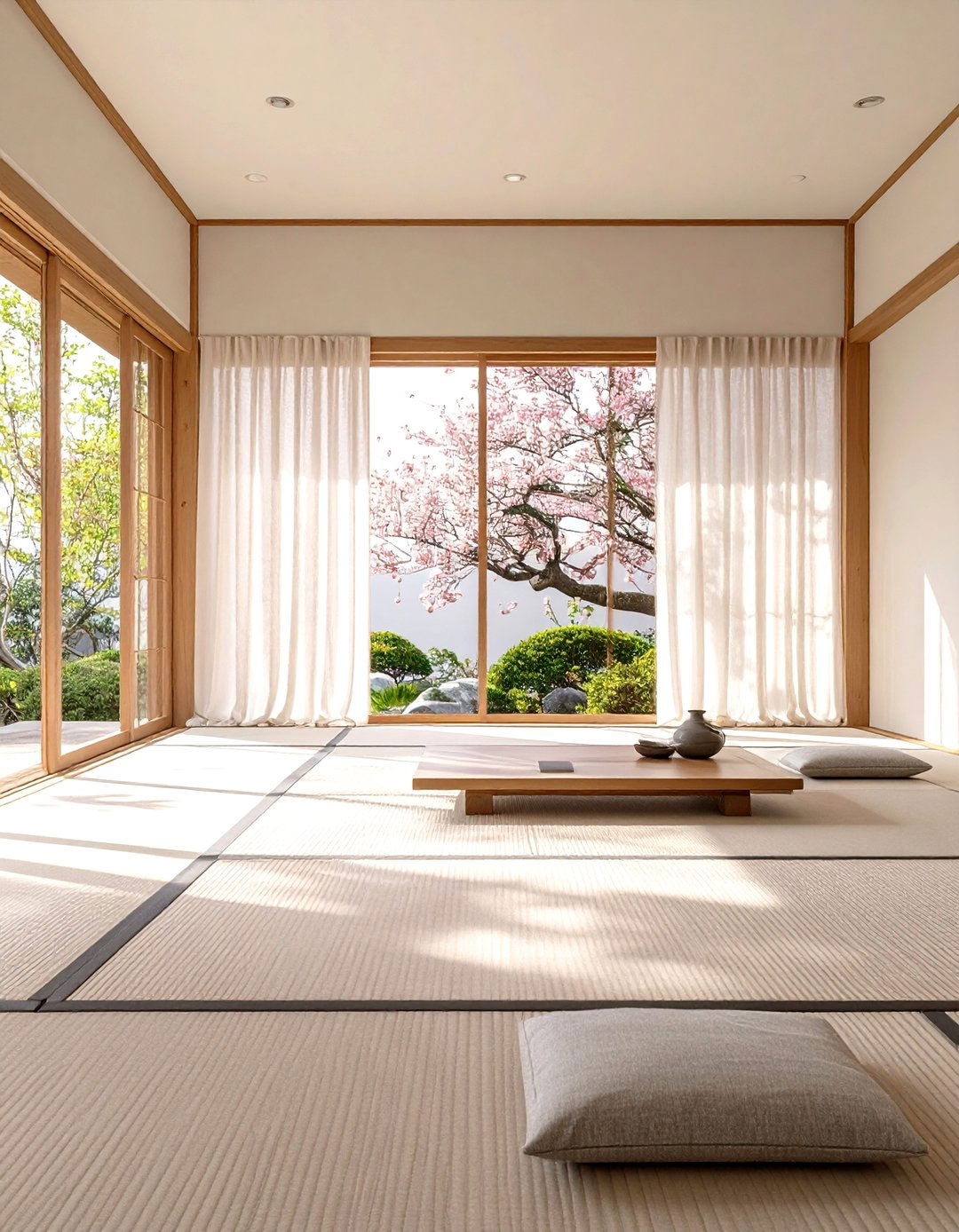
When daylight diffuses through billowy cotton gauze, a Zen room glows like early morning mist. Swap blackout curtains for unlined silk or linen panels, mounted ceiling-high to emphasize verticality. If privacy is a concern, layer translucent roller shades behind the sheers. The result is a constantly shifting play of light and shadow that encourages mindful pauses — watching afternoon rays crawl across a tatami mat can become its own form of meditation before emails reclaim attention.
6. Aromatherapy-Focused Zen Room Using Essential Oils
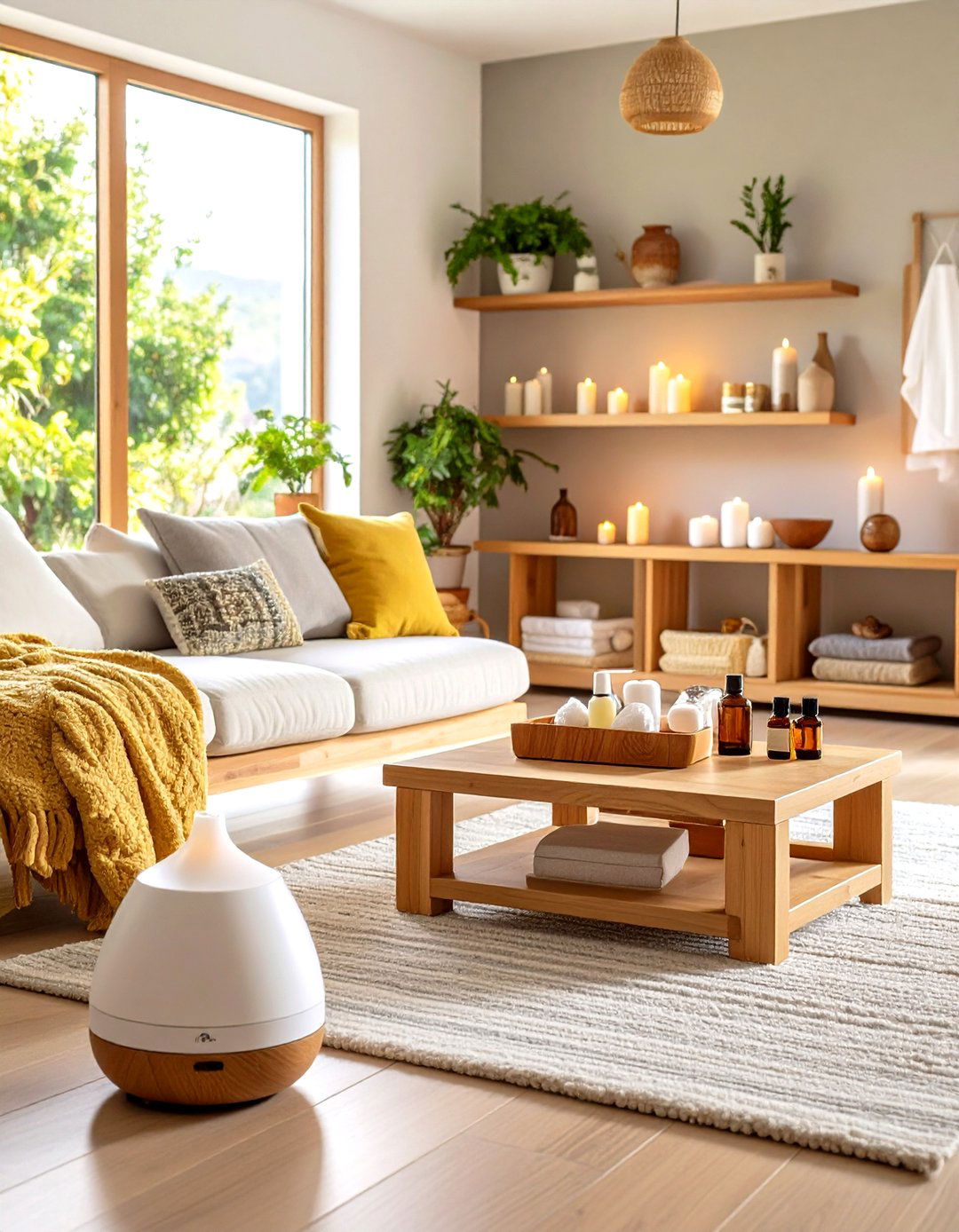
Olfactory cues anchor memory and mood, so weave aroma into your Zen room blueprint. A discreet ultrasonic diffuser loaded with cedarwood and bergamot sets an earthy baseline; peppermint can then spike alertness during yoga practice. Store oils in a carved wooden caddy and keep dilution pads handy to dab on wrists. Because scent particles cling to fabrics, choose washable cotton throws and ventilate after each session to prevent olfactory fatigue, maintaining every visit’s sense of fresh discovery.
7. Zen Room Featuring a Gentle Indoor Water Element

Trickling water masks street noise and invites deep breathing, so install a ceramic tabletop fountain or wall-mounted cascade. Position it on a low credenza, ensuring splash zones stay clear of electrics. The rhythmic gurgle becomes white noise that calms the amygdala, while negative ions generated by moving water subtly lift mood. Keep the pump cleaned weekly to prevent mineral buildup, and add a floating tea-light for evening glow — an effortless ritual signaling transition from task-oriented hustle to introspective stillness.
8. Corner Meditation Nook Within a Larger Zen Room

If floor space is scarce, carve a meditation nook into an under-used alcove. Lay cork tiles for warmth, install a floating shelf at knee height for incense, and paint a subtly darker tone behind it to create visual depth. A fold-away screen separates the nook from living areas, granting psychological privacy even in a studio apartment. By dedicating a micro-zone solely to stillness, you reinforce habit formation; the brain soon associates that exact footprint with calming intention.
9. Tatami Mats and Shoji Screens for Authentic Ambience
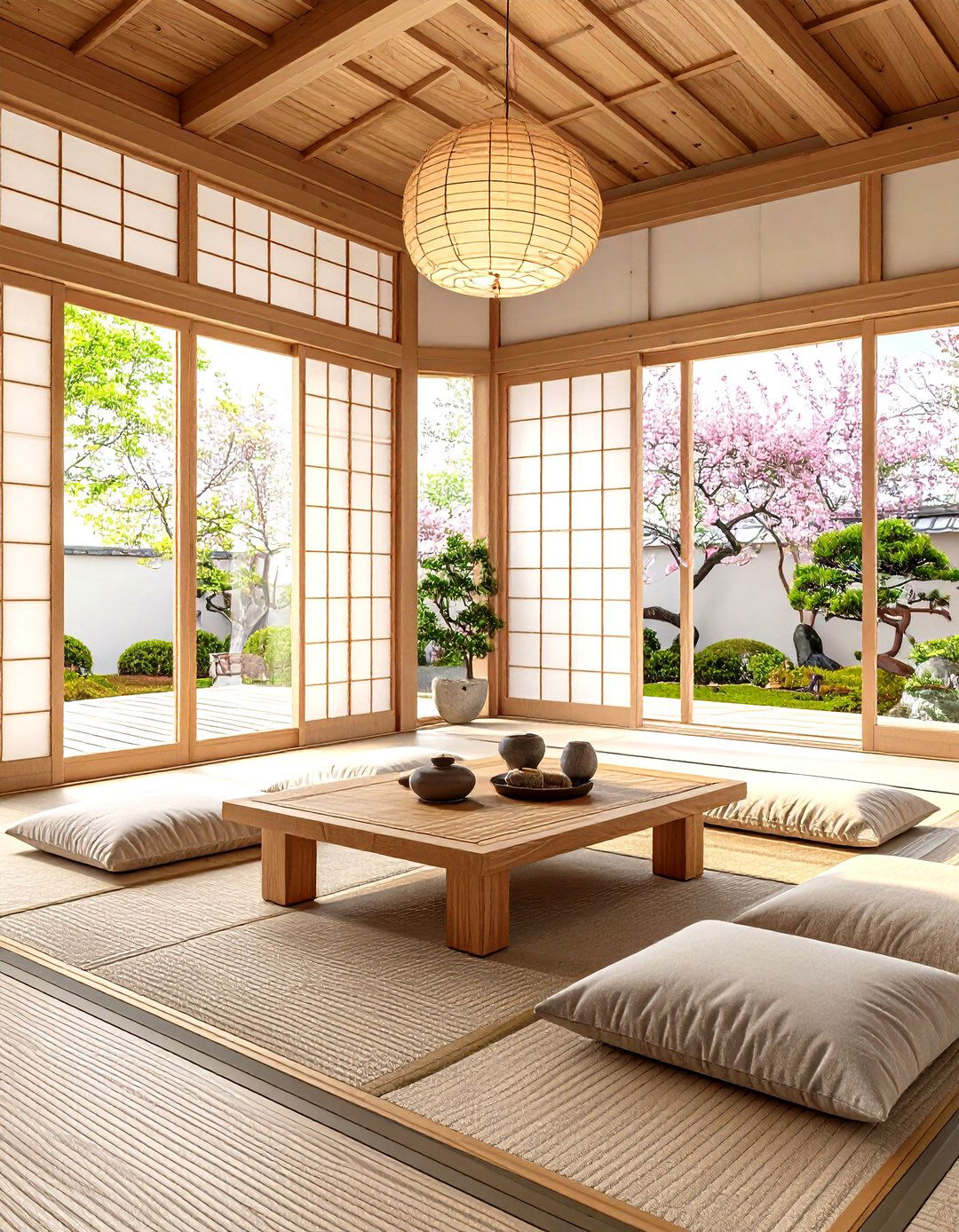
For traditionalists, woven tatami mats bring supple firmness and a subtle straw scent that instantly teleports the senses to Kyoto temples. Pair them with shoji screens in light maple frames to diffuse illumination while maintaining enclosure. Keep furnishings minimal — perhaps only a low chabudai table and a floor cushion — so each item earns its right to exist. Respect tatami etiquette by removing shoes and regularly sun-drying the mats to prevent moisture buildup, ensuring longevity and bio-hygiene.
10. Technology-Free Zen Room Sanctuary
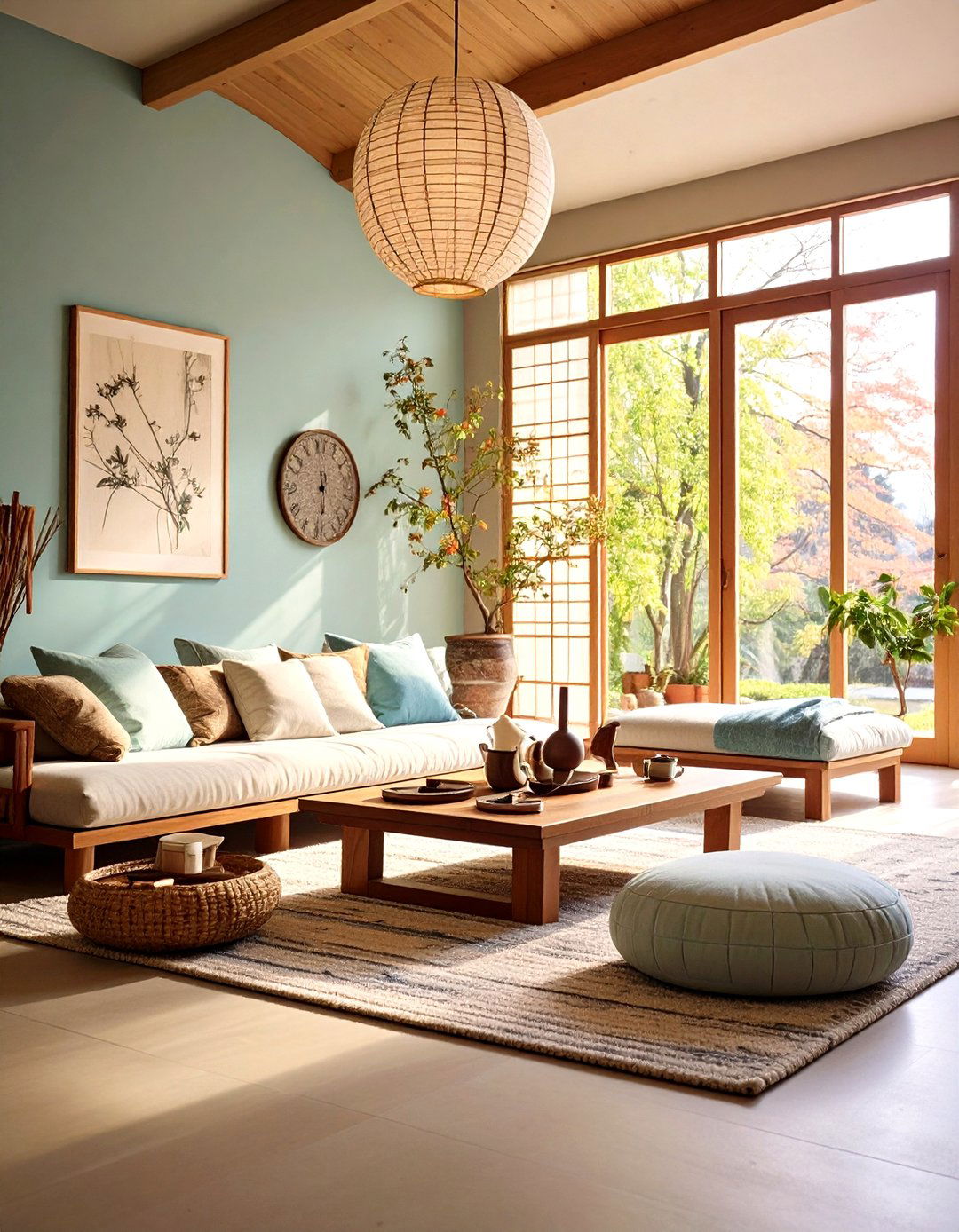
Digital detox becomes easier when the space itself resists electronics. Designate a basket outside the threshold for phones, installing a vintage wind-up clock inside to mark time. Replace Bluetooth speakers with a bamboo flute or Tibetan singing bowl. Lighting can rely on dimmable floor lanterns rather than smart bulbs. By curating analog alternatives — paper journals, calligraphy kits, reed diffusers — you teach the body to expect slower rhythms, reinforcing boundaries between connected and contemplative living.
11. Zen Room with Layered Ambient Lighting
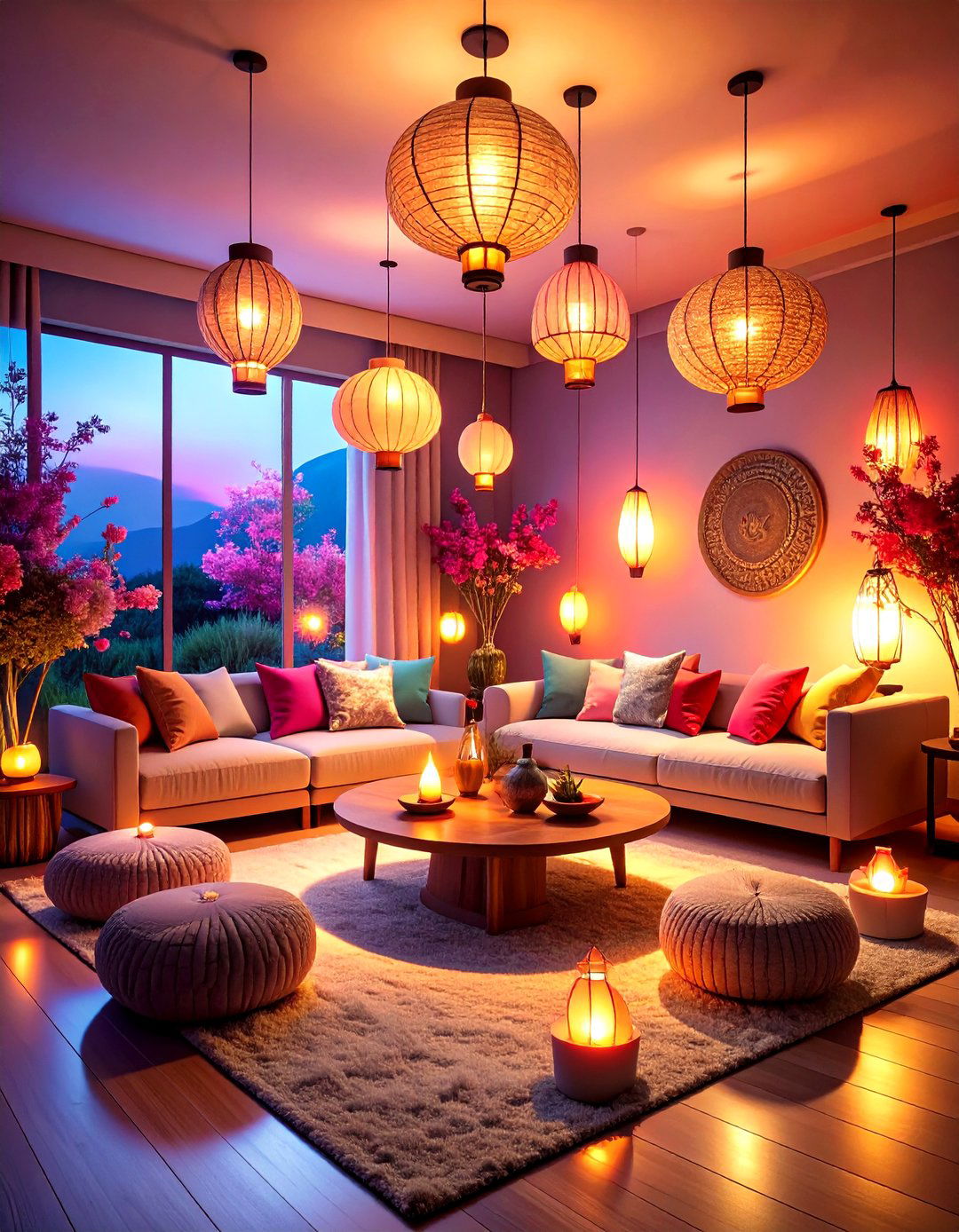
Soft illumination feels most soothing when it arrives in layers: think salt-rock lamps at ankle height, paper lanterns at mid-eye, and a dimmable pendant overhead. Aim for warm 2700-3000 K bulbs to mimic dusk, letting the circadian system downshift naturally. Place lamps behind furniture to bounce glow off walls, erasing harsh shadows. If overhead fixtures exist, fit them with rice-paper shades to scatter brightness. The adjustable mix keeps mood balanced from dawn meditation to late-night journaling.
12. Earth-Textured Walls for Tactile Comfort
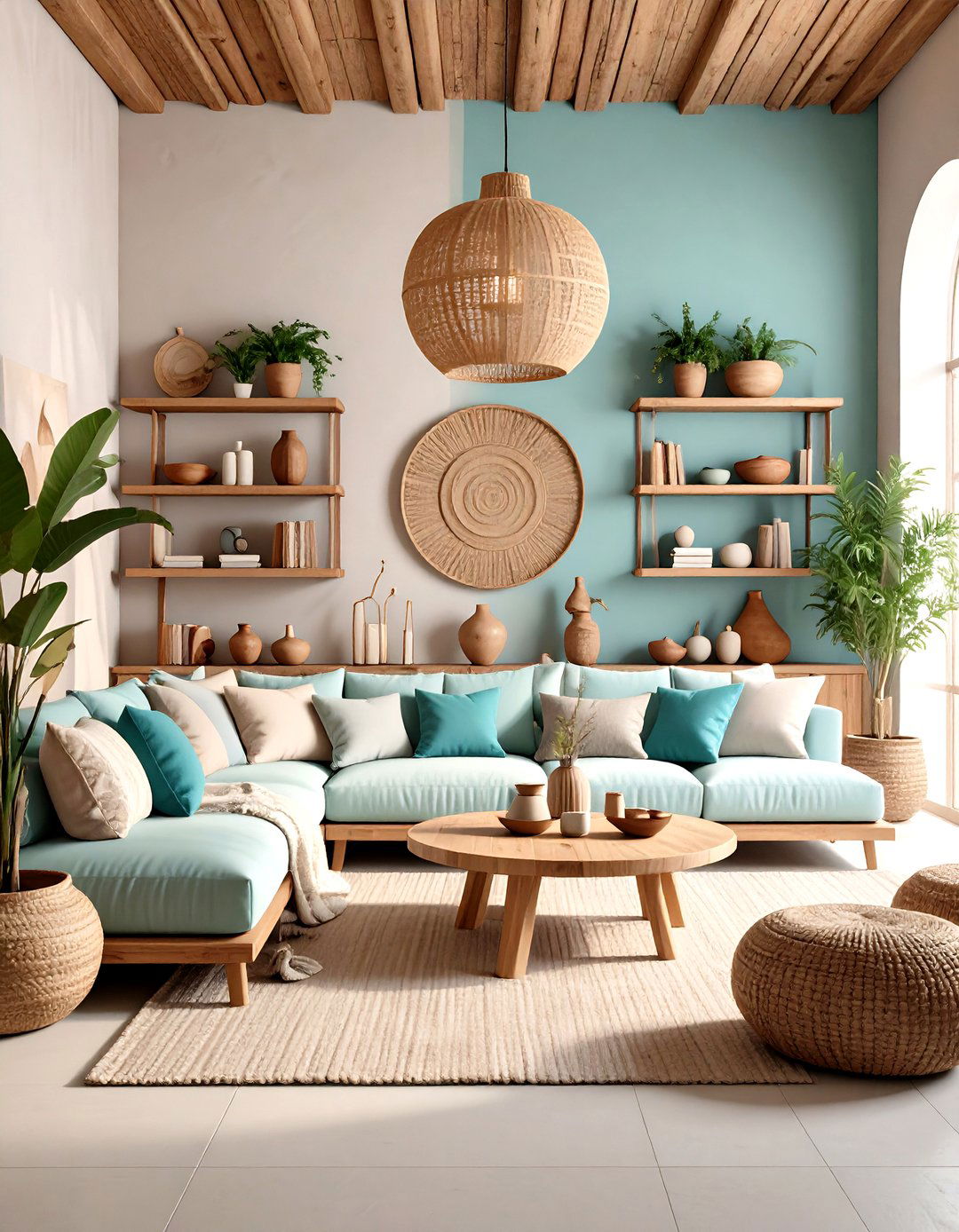
Clay or lime-wash paint adds a velvety, touchable depth that flat acrylic can’t match. The subtle color variations and matte finish reduce glare, making the Zen room feel cocoon-like yet breathable. Apply in broad, criss-cross strokes for artisanal imperfection; then pair the finish with raw timber shelves displaying a handful of mindful objects. Because clay is naturally mold-resistant and VOC-free, it supports the well-being goals that underpin every Zen design decision.
13. Biophilic Zen Room Teeming with Greenery
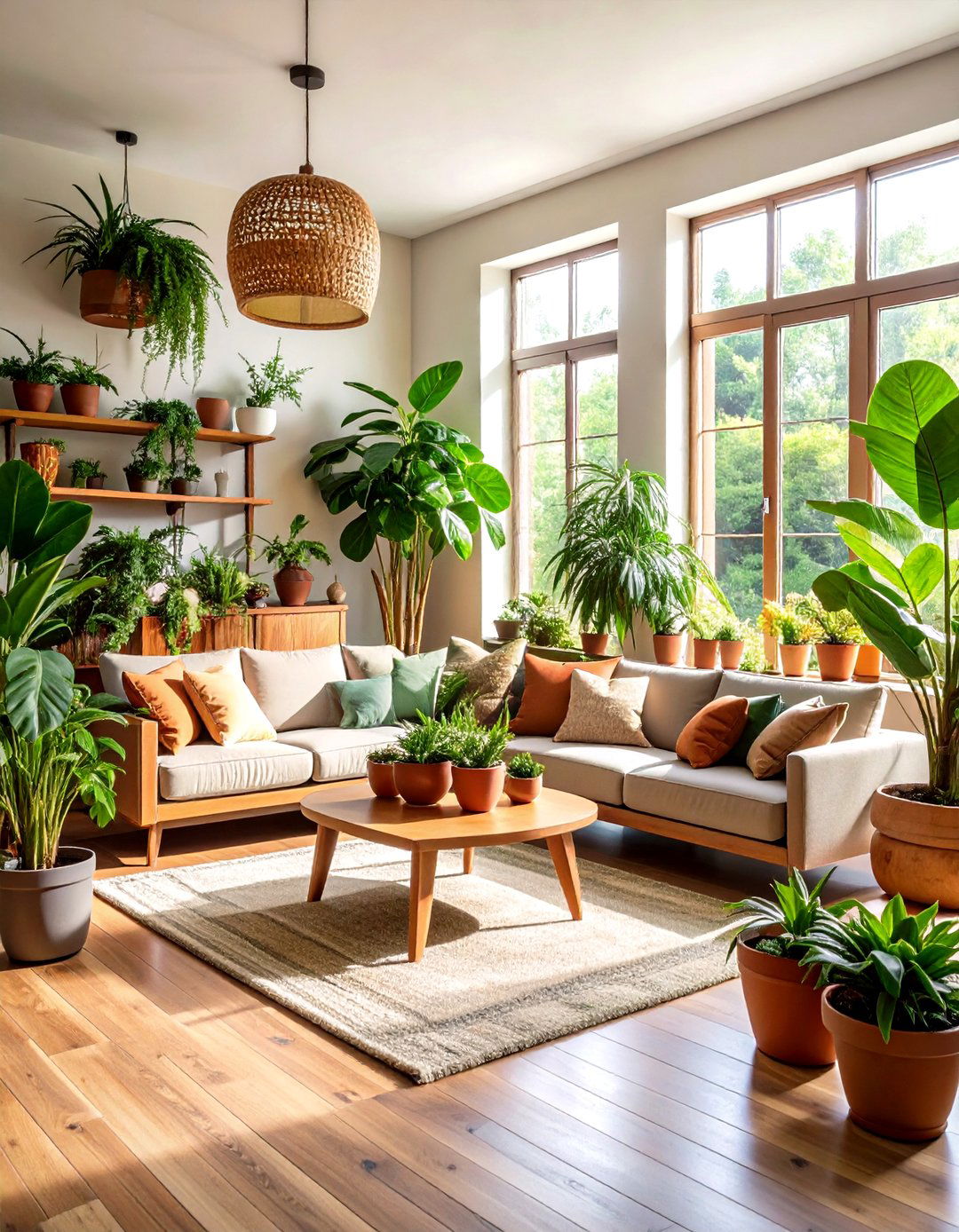
Indoor plants boost humidity, clean air, and invite slow observation. Start with low-maintenance ZZ plants or snake plants flanking the doorway, add trailing pothos above eye level for vertical interest, and crown the scene with a statement fiddle-leaf fig near a window. Mist foliage during evening wind-down to raise moisture and appreciation simultaneously. Terracotta pots in varied diameters echo earth tones and prevent root rot; their porous surfaces also regulate moisture, embodying nature’s quiet engineering.
14. Multifunctional Zen Room That Converts to Yoga Space
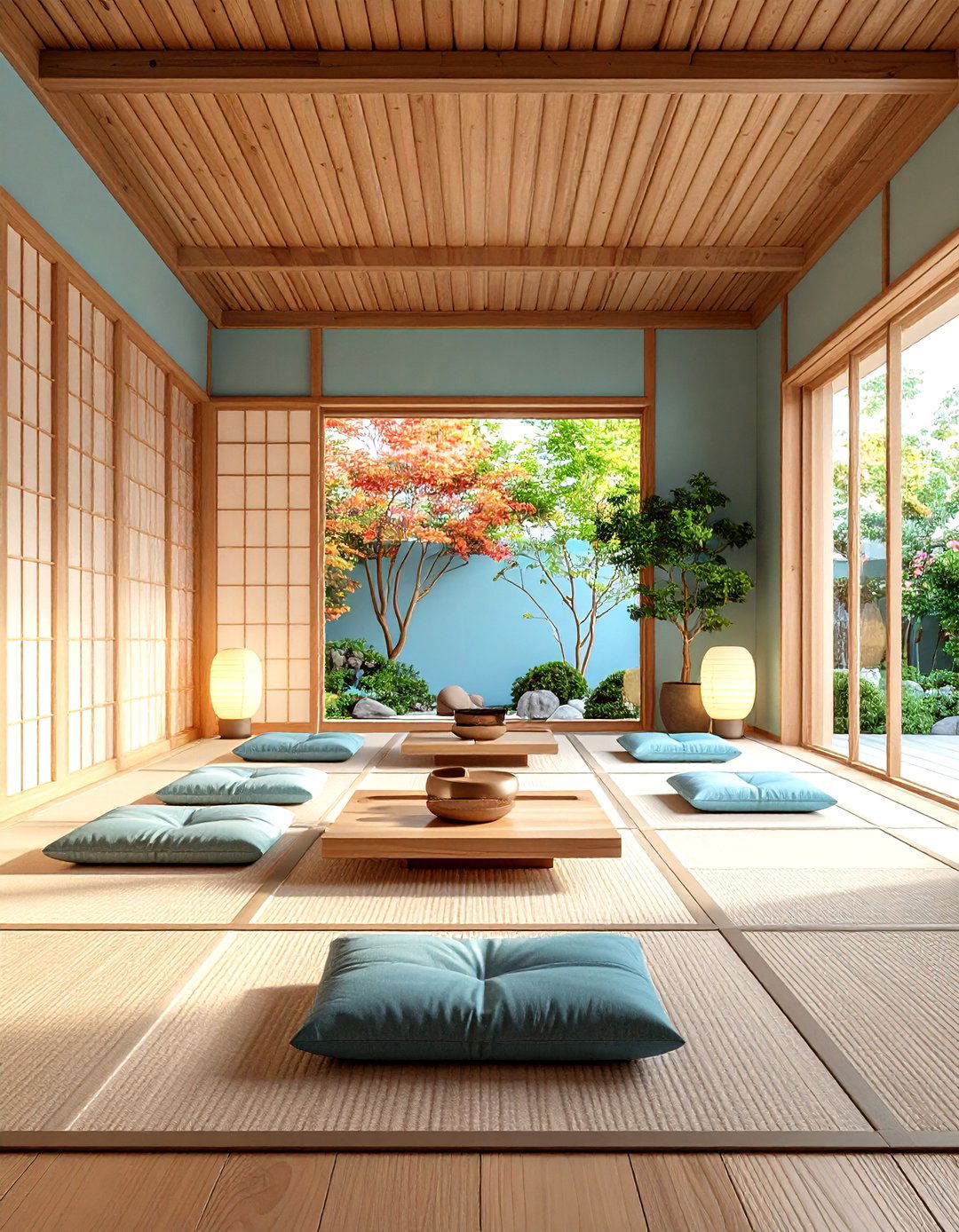
Urban living often demands flexibility, so choose foldable tatami mats or a roll-out cork yoga mat that stores under a bench. Wall-mounted hooks can hold straps and bolsters, while a collapsible bamboo screen hides them when guests arrive. In daily life, the room transitions from silent study spot to vigorous vinyasa stage and back again. This adaptability ensures mindfulness remains practical rather than ornamental, integrating movement, breath, and repose within the same square meters.
15. Zen Room Dressed in Natural-Fiber Textiles

Textiles not only soften acoustics but also remind us of the earth’s generosity. Outfit cushions in unbleached linen, drape organic cotton throws over benches, and spread a hemp rug underfoot. Each fiber breathes, wicks moisture, and ages gracefully, developing patina rather than pilling. Launder with gentle, plant-based detergents free of synthetic fragrances to preserve tactile integrity. Over time, the subtly evolving textures mirror a mindfulness practice: imperfect, iterative, and quietly rewarding.
16. Vertical-Space Zen Room for Compact Apartments
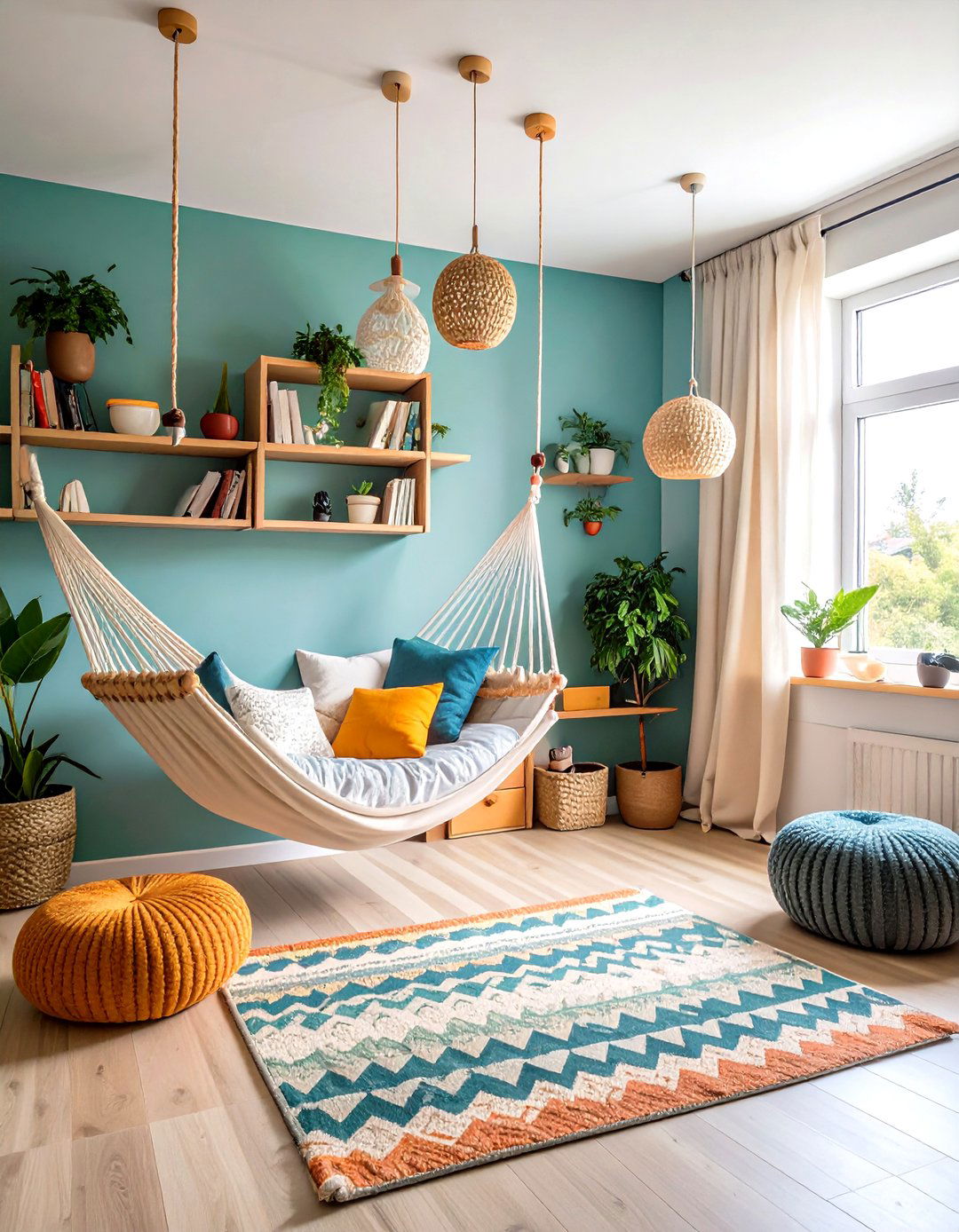
When floor area is limited, look up. Floating pine shelves staggered from knee to head height house candles, books, and succulents without crowding the footprint. A wall-mounted fold-down desk provides journaling surface yet disappears after use. Ceiling hooks can hold cotton hammocks for restful reading, defying the notion that calm requires sprawling square footage. By treating walls and ceiling as creative canvases, you craft spatial relief within even the tightest studios.
17. Zen Room Accented with Stone and Pebble Paths
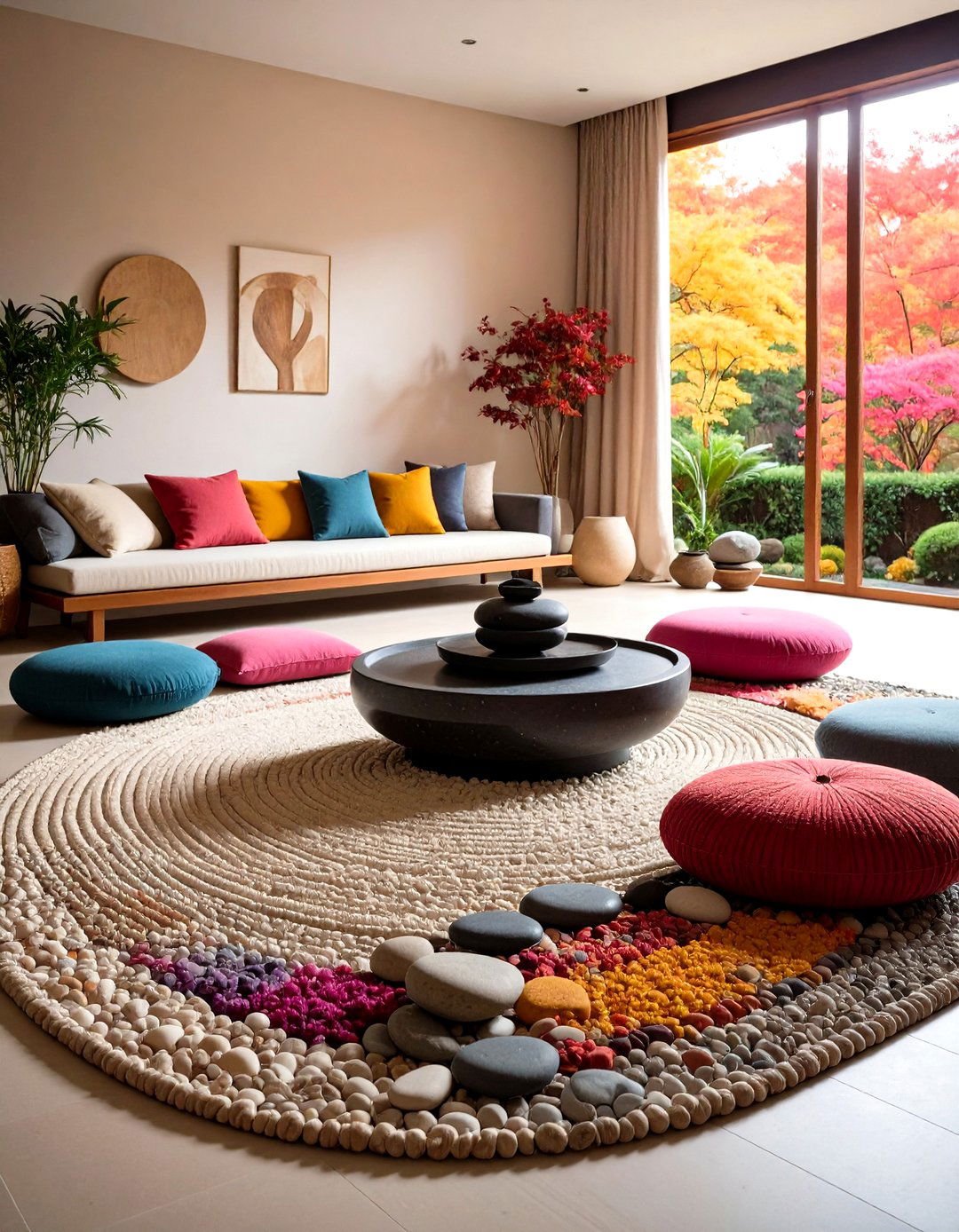
A shallow tray of river pebbles lining the entry subtly signals transition into calm territory. Inside, a basalt meditation stool grounds the space both literally and energetically. Stone’s thermal mass keeps seating pleasantly cool in summer, while rough-hewn textures provide sensory contrast to smoother wood and fabric. To prevent austere chilliness, soften edges with a wool floor pillow or hand-knotted rug, ensuring the elemental mix feels balanced rather than barren.
18. Sustainable Zen Room Using Eco-Friendly Materials
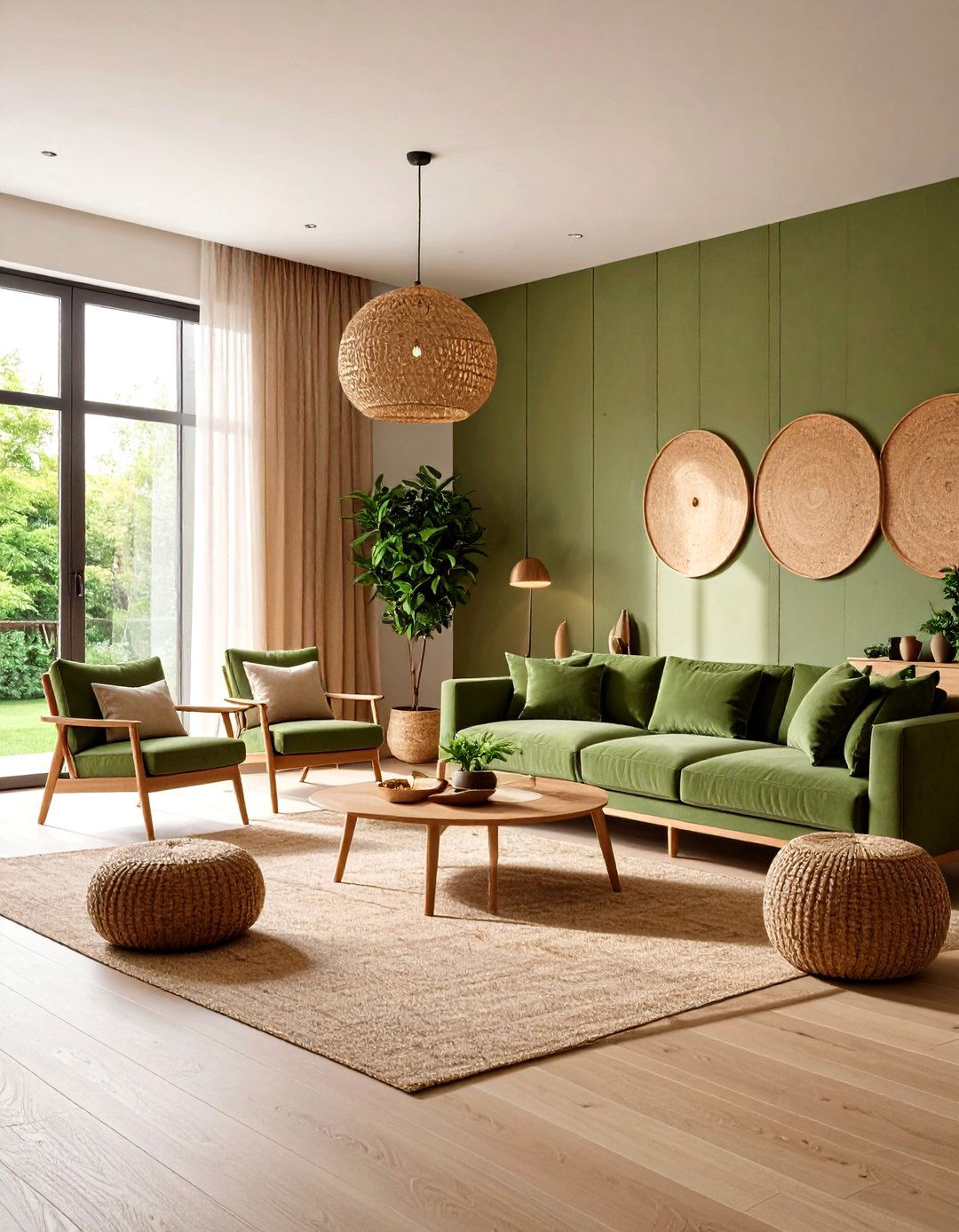
Mindfulness extends to planetary health; thus, source FSC-certified woods, water-based finishes, and recycled-glass vases. Choose low-energy LED lanterns and power them via a small solar charger stationed on a windowsill. Incorporate cork wall panels — they’re antimicrobial, sound-absorbing, and rapidly renewable. Label a basket for textile offcuts, then repurpose them as cleaning cloths, reminding occupants that serenity deepens when consumption decreases. Your Zen room becomes both a refuge and a quiet act of environmental stewardship.
19. Portable Zen Room Kit for Travelers
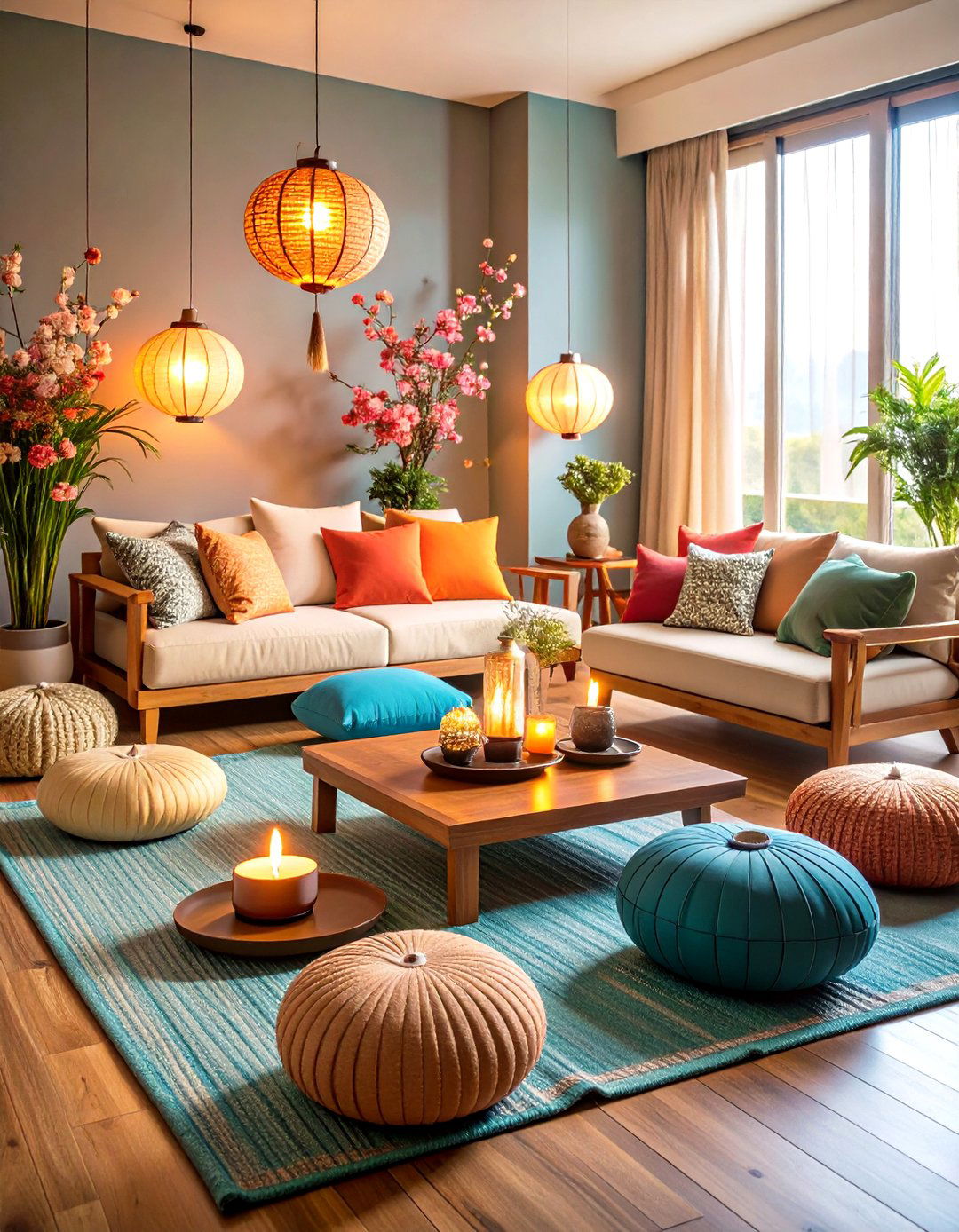
For nomads or frequent business travelers, assemble a compact kit: foldable meditation mat, travel-sized essential oil diffuser, collapsible rice-paper lantern with USB rechargeable bulb, and a gauze scarf to drape across hotel desks. Set items in the same layout wherever you land; the brain anchors to these familiar cues, creating a sense of place amid constant motion. This ritual safeguards inner stillness despite unfamiliar surroundings, proving that Zen room principles travel light.
20. Reading-Focused Zen Room Retreat
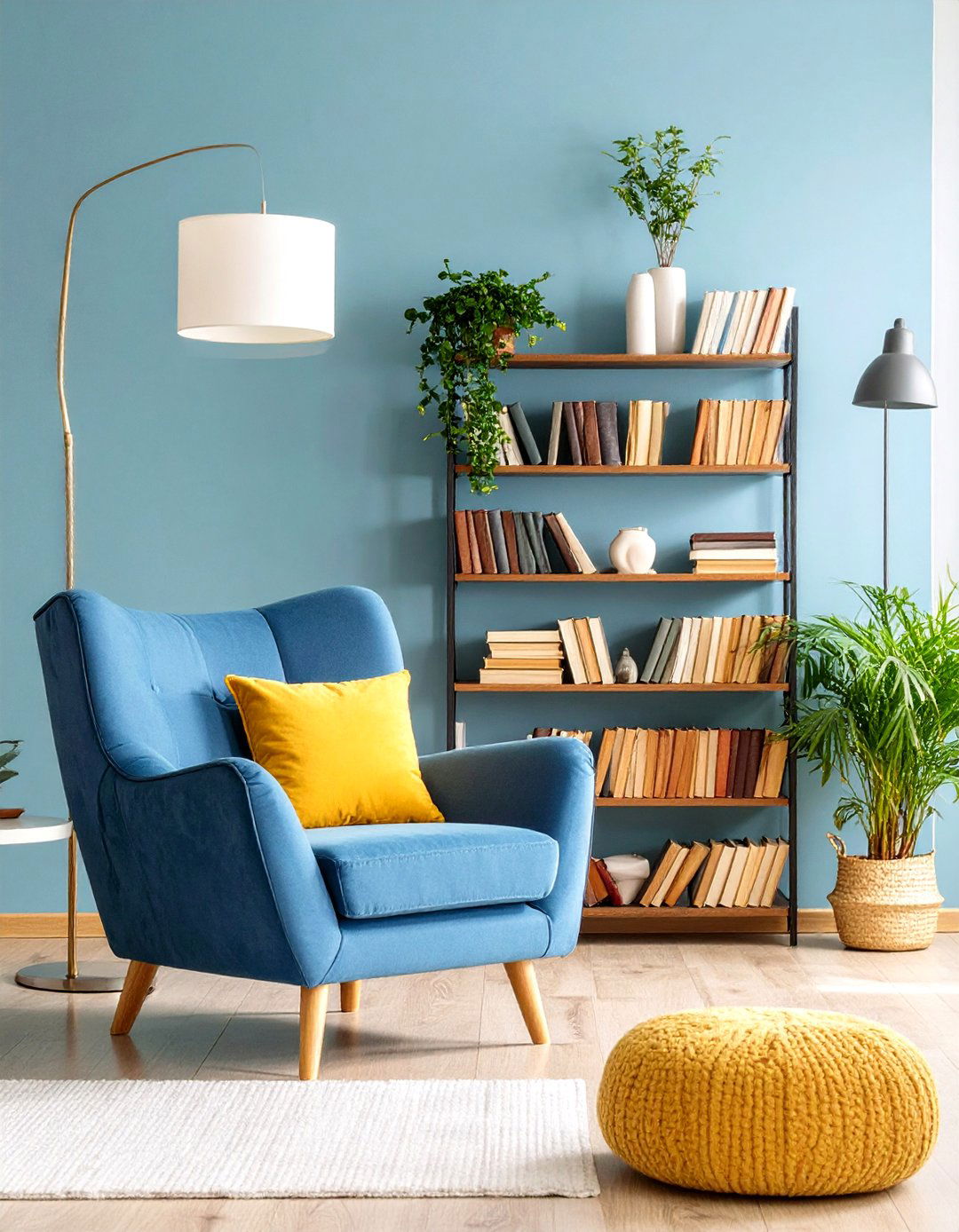
Curling up with literature can mirror meditation, so dedicate a deep armchair with ergonomic lumbar support beside a low tea table. Install a height-adjustable lamp with a frosted shade to prevent page glare, and shelve only a curated handful of calming titles — poetry, philosophy, or nature writing. Soundproof with heavy linen drapes or cork wall tiles, allowing story immersion without external chatter. By viewing reading as conscious slowdown, the Zen room supports mental nourishment alongside silence.
21. Kid-Friendly Zen Room with Calming Corners
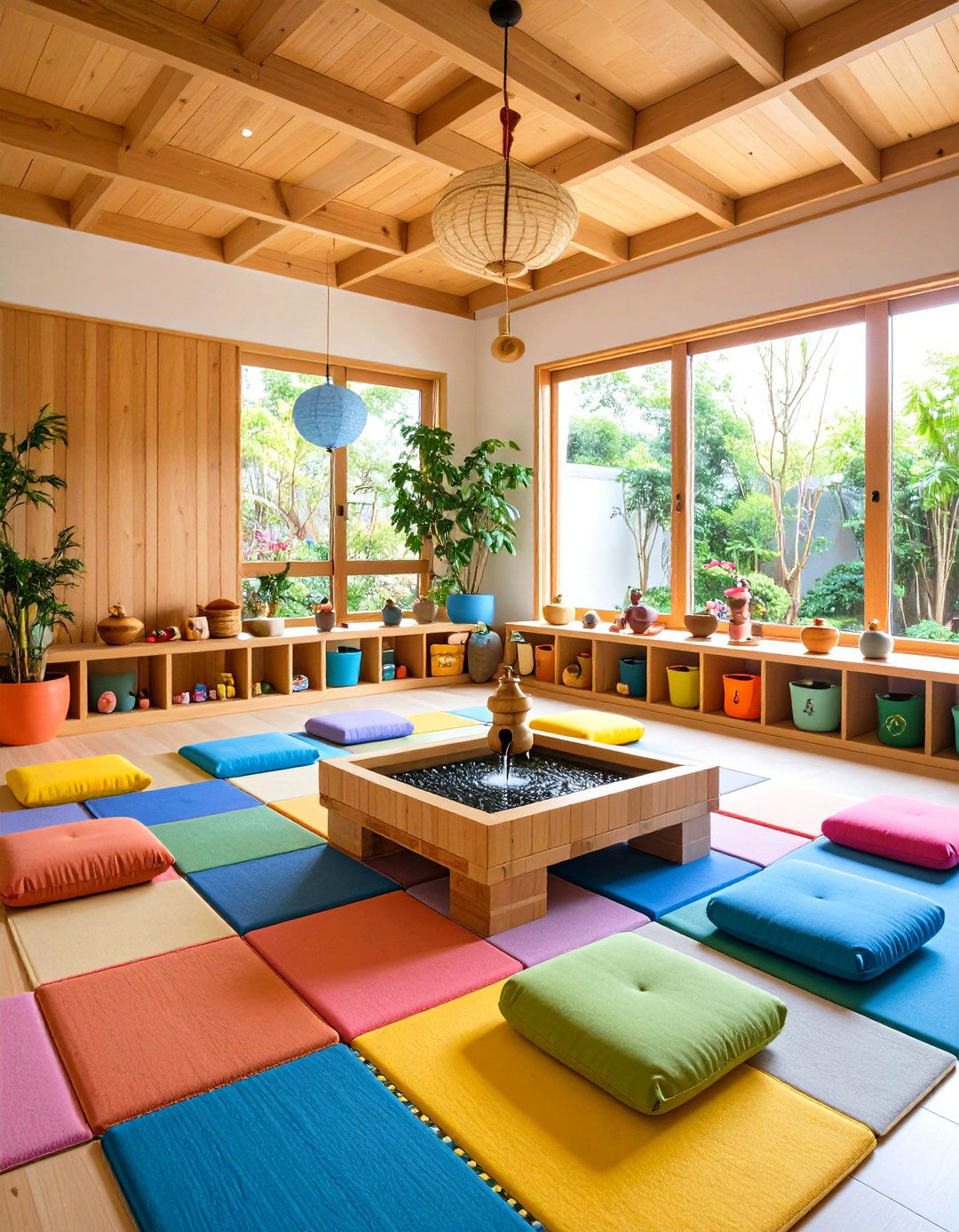
Children benefit from quiet zones too. Lay soft tatami-style foam tiles, set a miniature bamboo water fountain at safe reach, and provide picture-based breathing cards. Storage bins labeled with illustrations help youngsters tidy mindfully. Paint walls a gentle sage or sky blue to moderate overstimulation. When kids learn early that rest is an active choice, the Zen room graduates from novelty to lifelong skill-building environment — one your entire household can share.
22. Balcony or Sunroom Zen Room Extension

An enclosed balcony makes a delightful Zen room when screened from harsh glare. Add roll-up bamboo shades, a folding futon for sky-gazing, and potted dwarf conifers to evoke a pocket forest. Marble pebbles in planter trays capture runoff and shimmer under morning light, elevating simple greenery into sensory installation. Outdoor-grade floor cushions withstand temperature swings, ensuring you can meditate beneath rainfall or watch dusk settle without leaving home.
23. Zen Room with Warm Scandinavian Accents
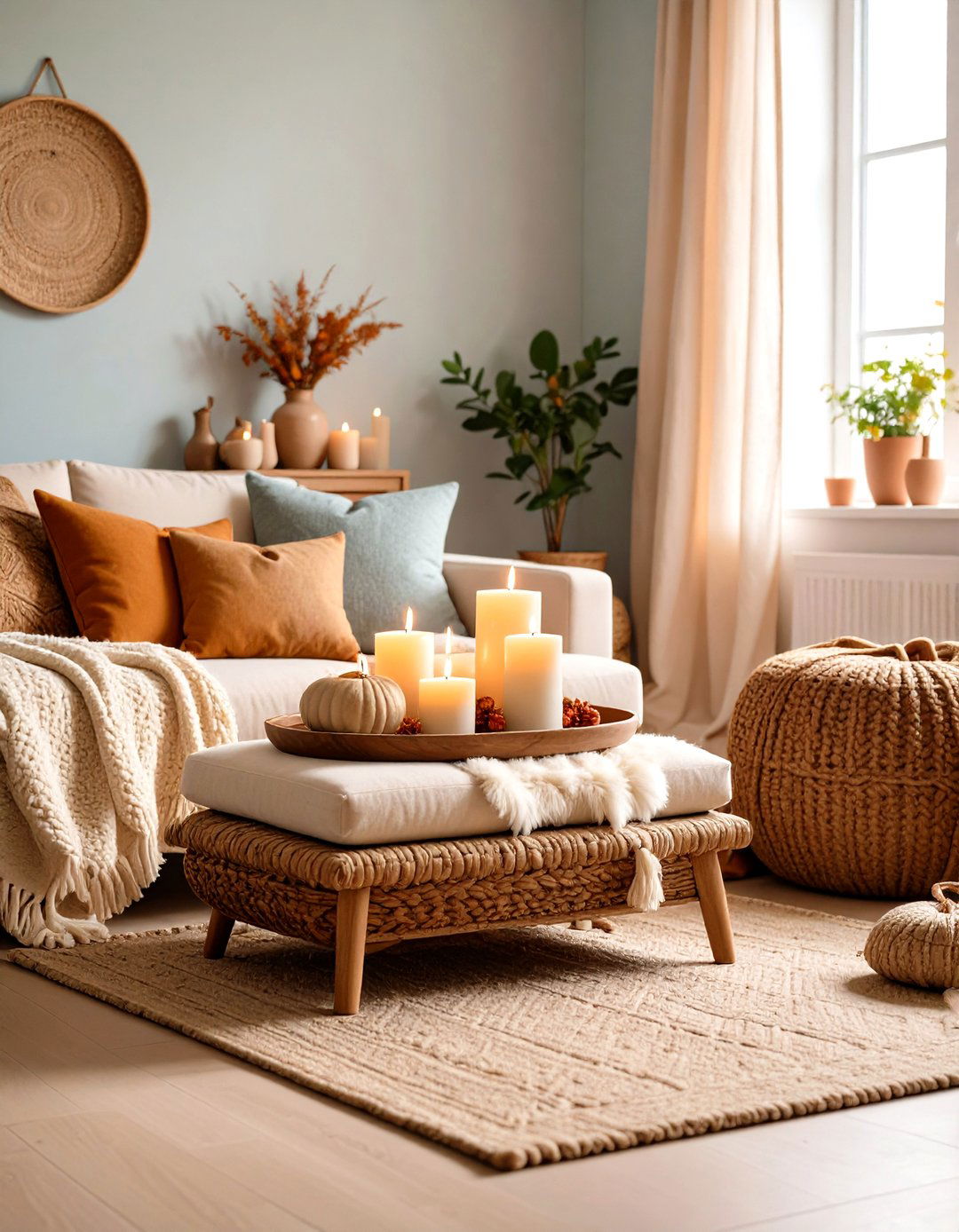
By mixing Zen restraint with Nordic hygge, you can enjoy minimalist order plus cozy invitation. Choose pale oak floors, sheepskin over a woven bench, and pillar candles arranged on a slate tray. Keep the palette snowy yet punctuate with muted clay accents. This cultural crossover channels both Japanese wabi-sabi imperfection and Scandinavian appreciation for warmth, delivering an atmosphere that relaxes guests while encouraging unhurried conversation over jasmine tea.
24. Seasonal Zen Room Adaptations Year-Round

Unlike static décor, a mindful space evolves with cycles. In summer, swap heavy cushions for breathable linen covers and tuck a mint-scented spray bottle in the fridge for cooling facial mists. In winter, layer wool throws and introduce a karafuro tabletop fireplace or candle cluster. Rotate artwork seasonally: plum-blossom prints in spring, russet leaves come fall. By honoring natural rhythms, the Zen room stays responsive, keeping your practice fresh rather than routine.
25. Personalized Zen Room Through Intentional Objects
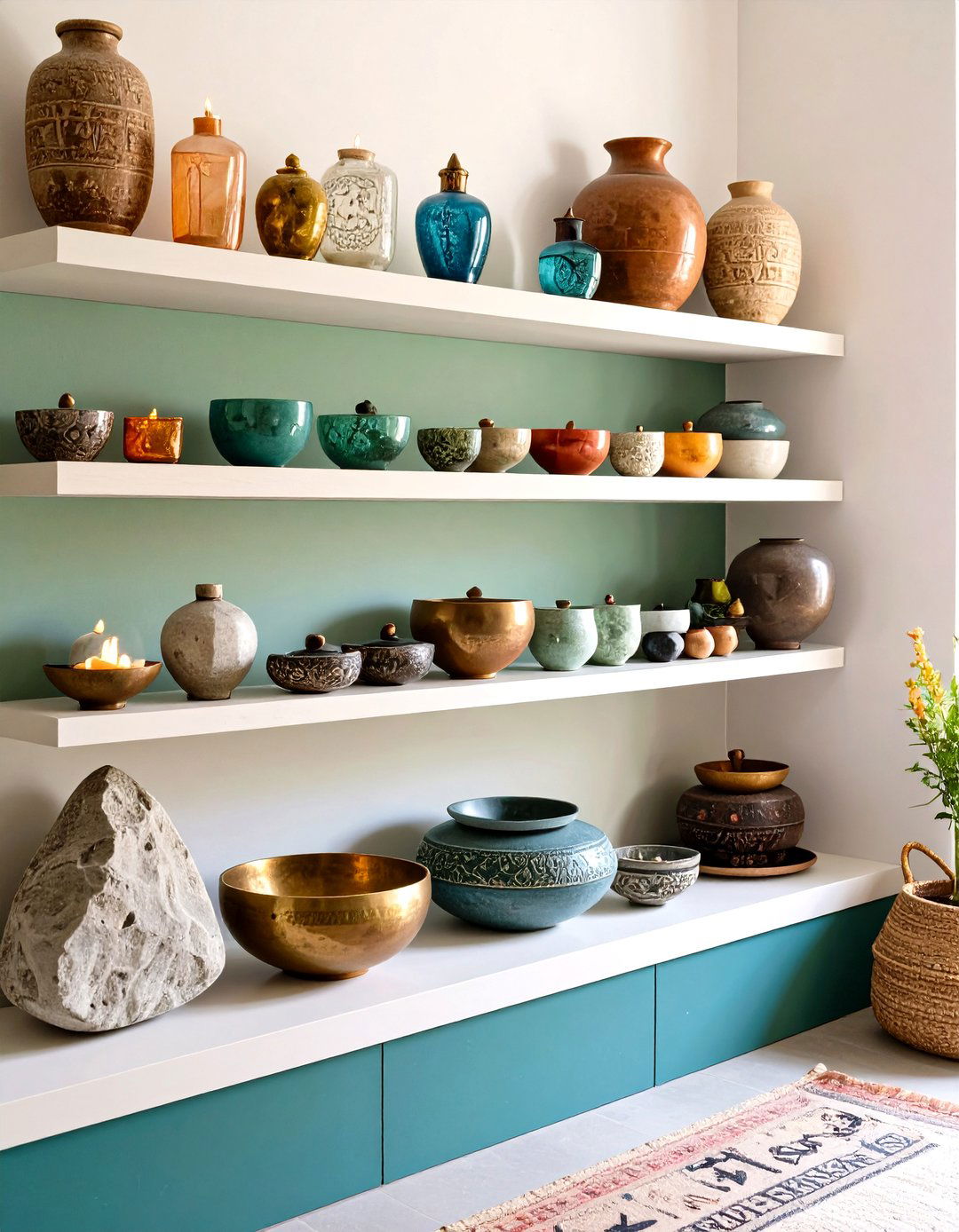
Finally, infuse your Zen room with meaning by curating items that resonate rather than clutter. Display a single travel stone, an heirloom tea bowl, or a hand-written mantra — each object earning its spot through emotional weight. Arrange them on a low shelf following odd-number groupings, leaving negative space to let symbolism breathe. As you evolve, edit the collection; removal can feel as significant as addition, reminding you that calm is a continuous, deliberate creation.
Conclusion:
When thoughtfully arranged, Zen rooms become more than aesthetic statements — they act as daily invitations to slow down, breathe deeply, and notice. Whether you favor low-lying platform seating, plant-rich biophilia, or the Japandi revival’s soft minimalism, each idea converges on one promise: a sanctuary where your mind can unclench and your senses savor life’s quieter notes. Harness these 25 concepts as modular tools, mix what resonates, and watch serenity expand from one intentional room into your entire way of living.


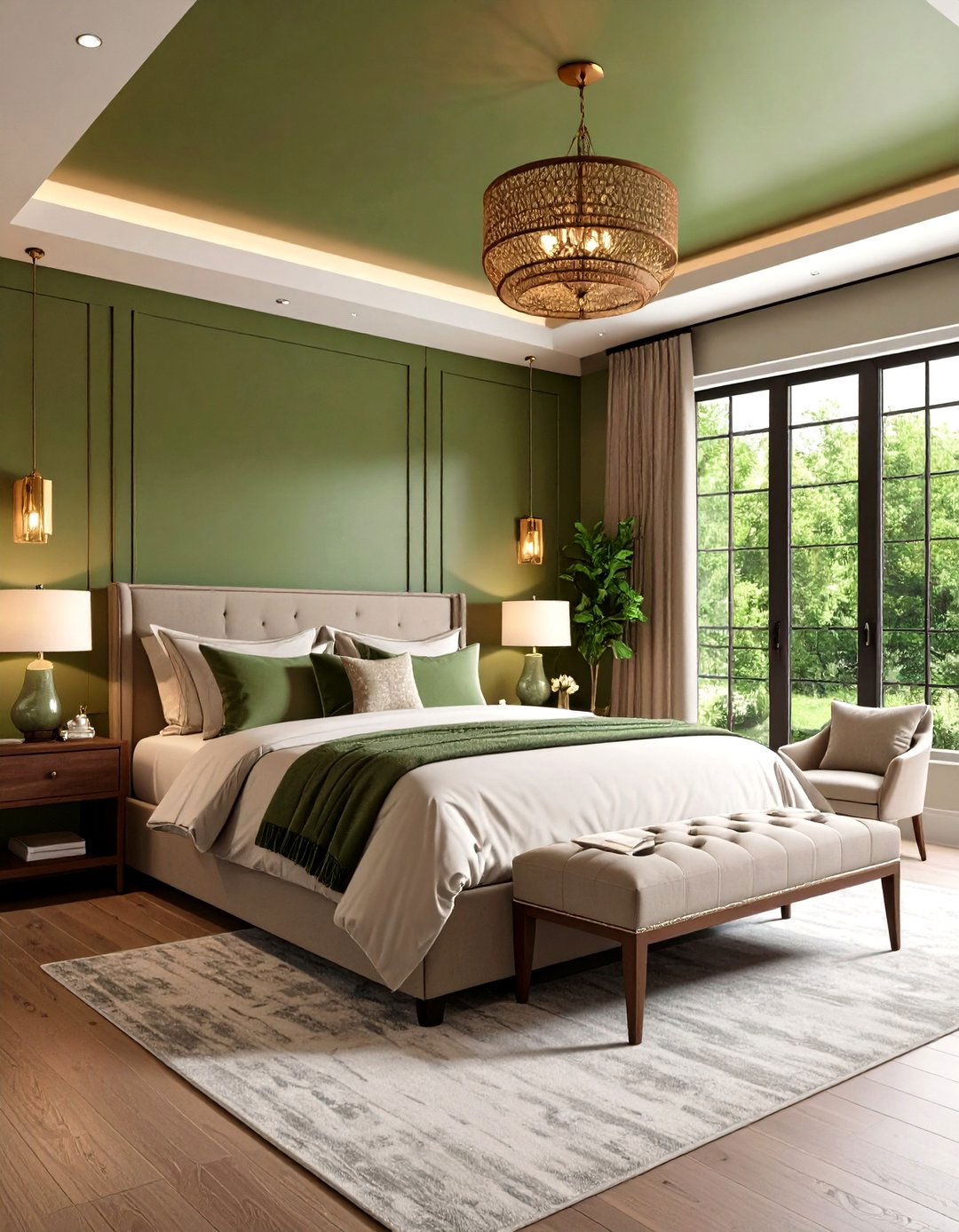
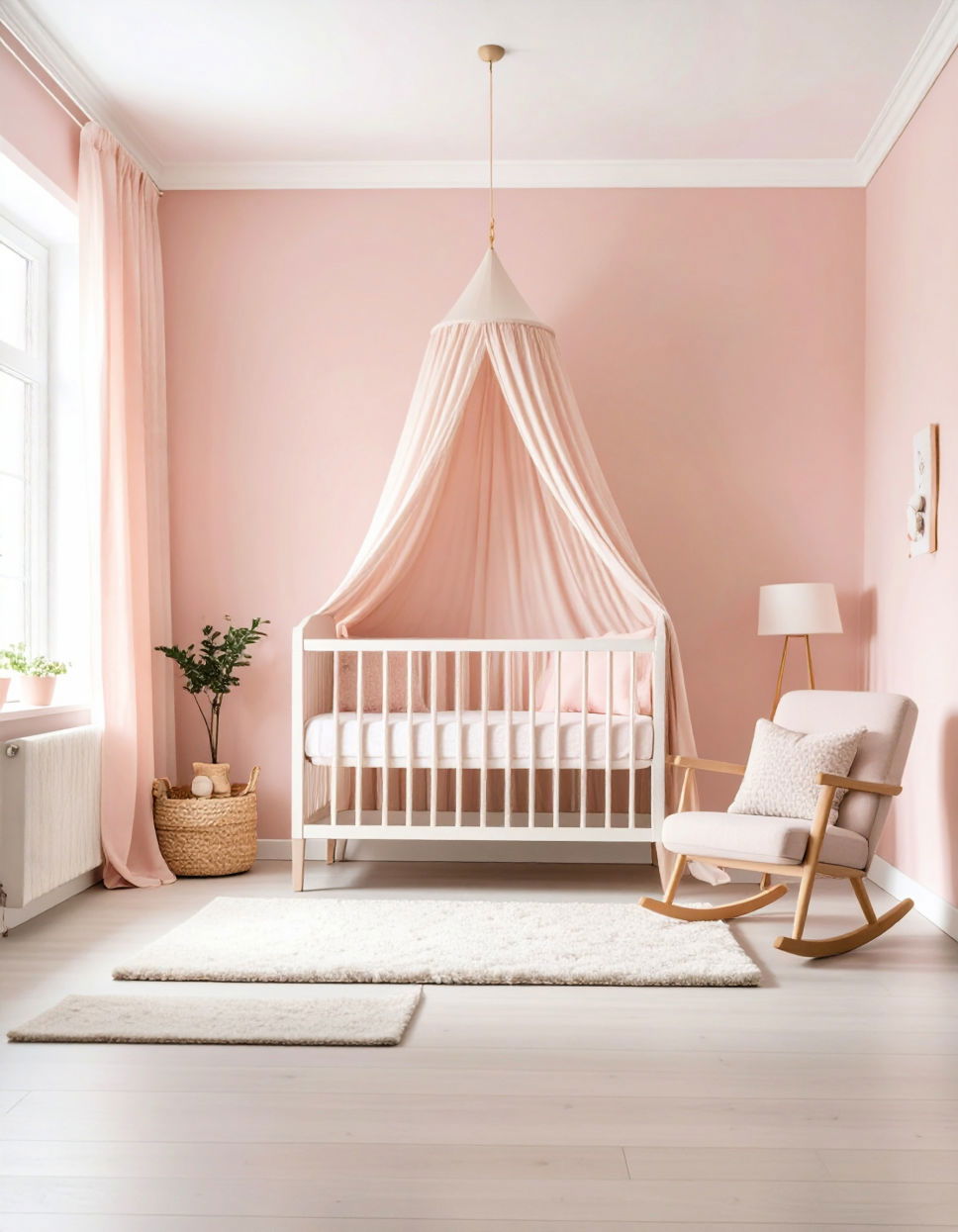
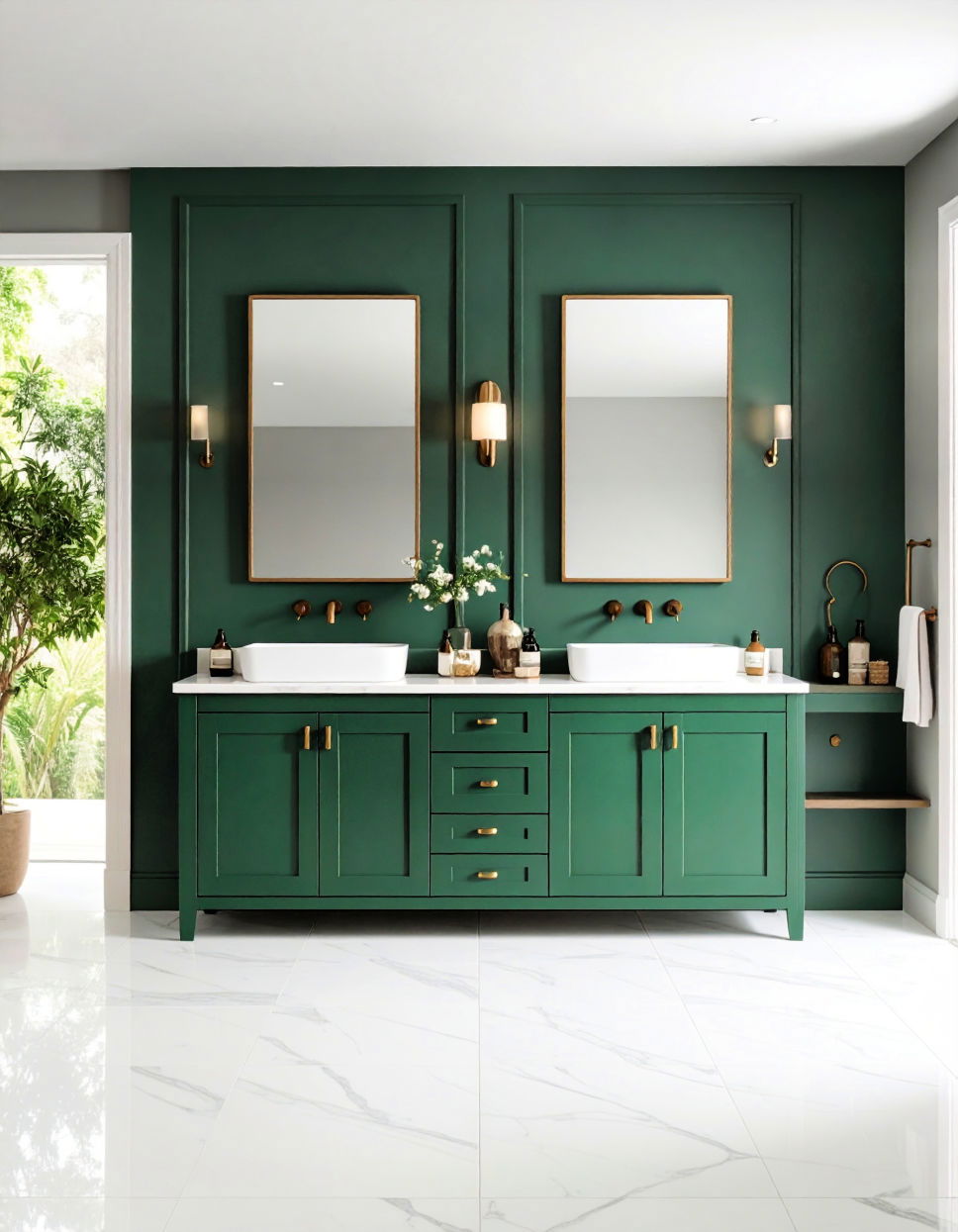

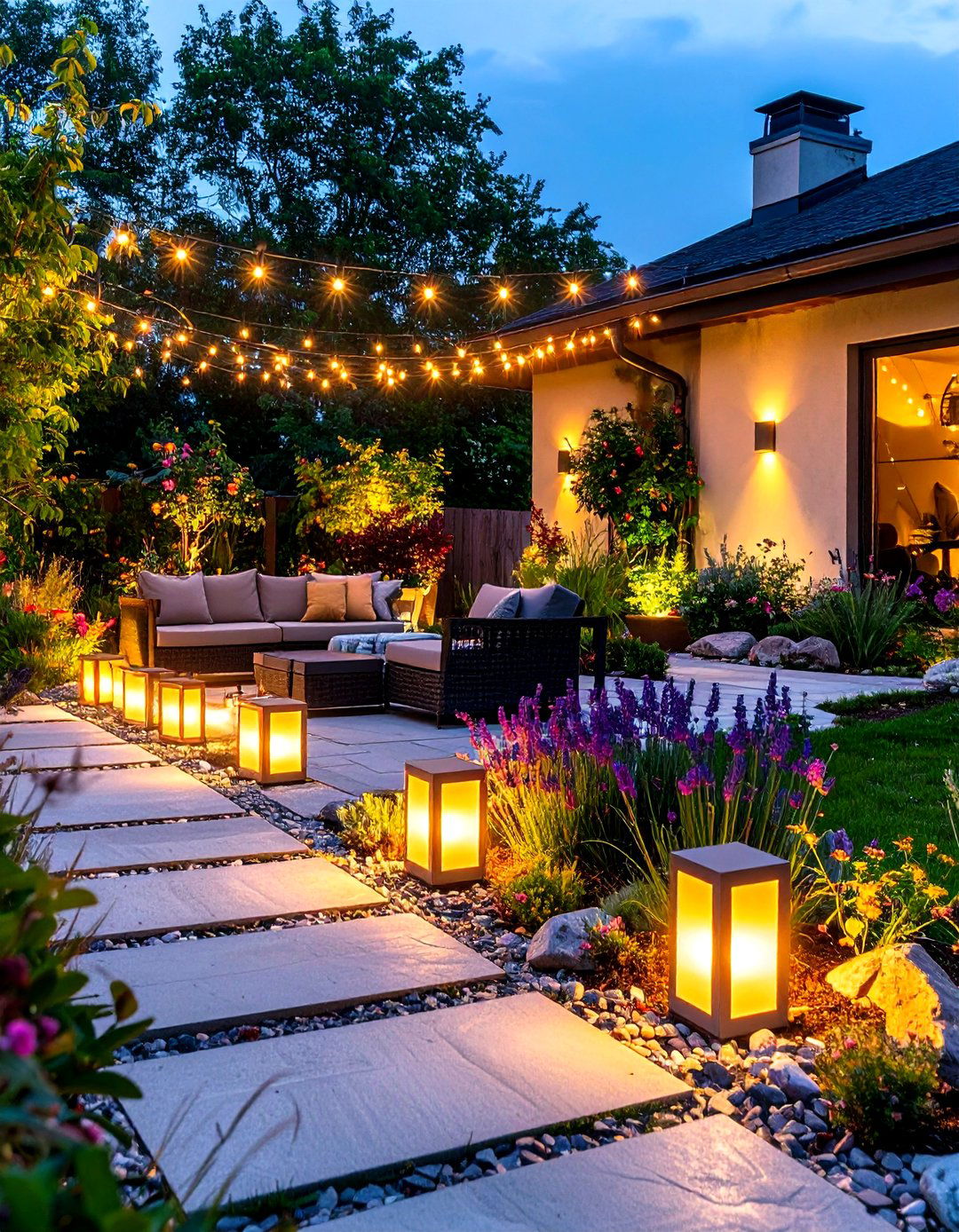
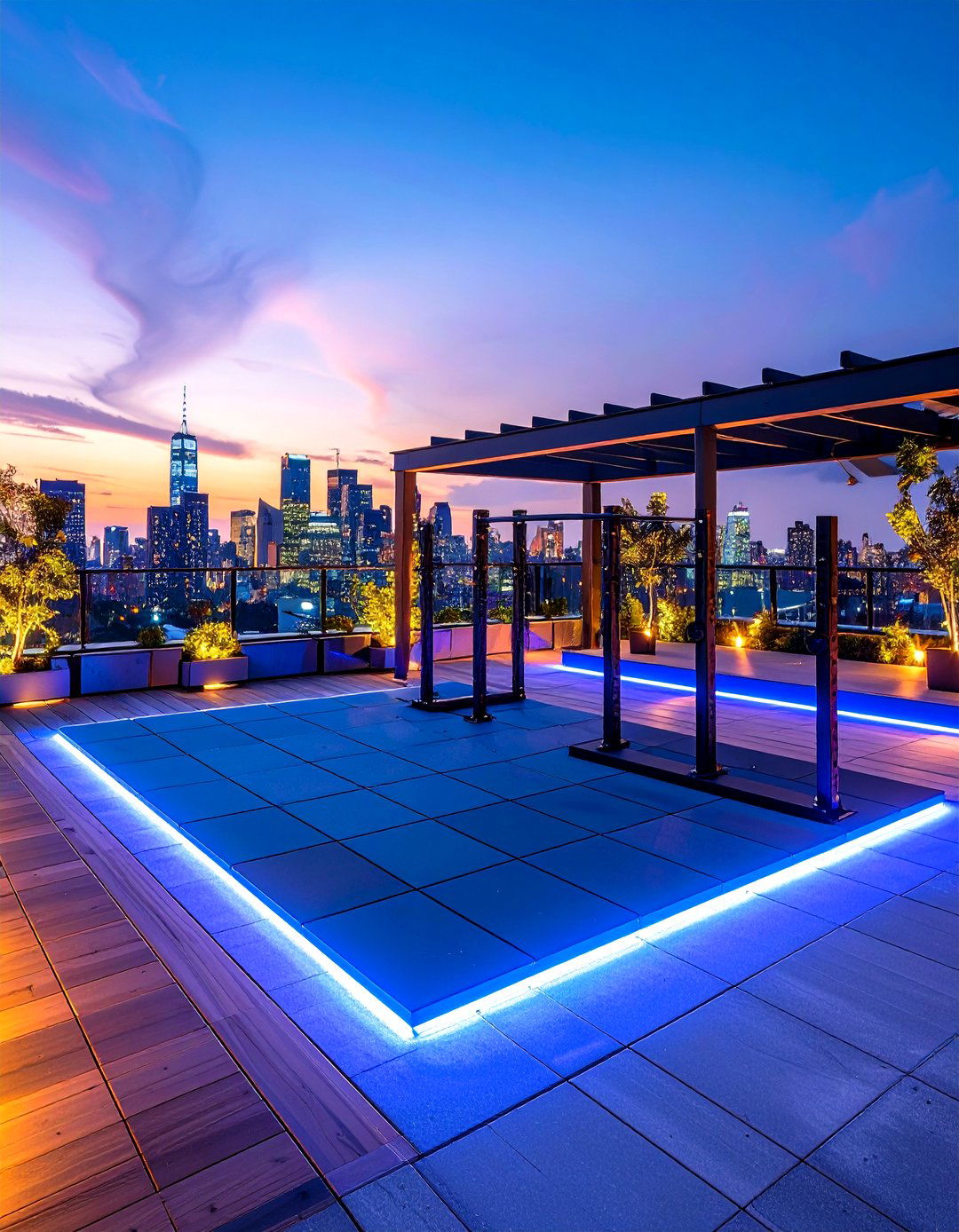

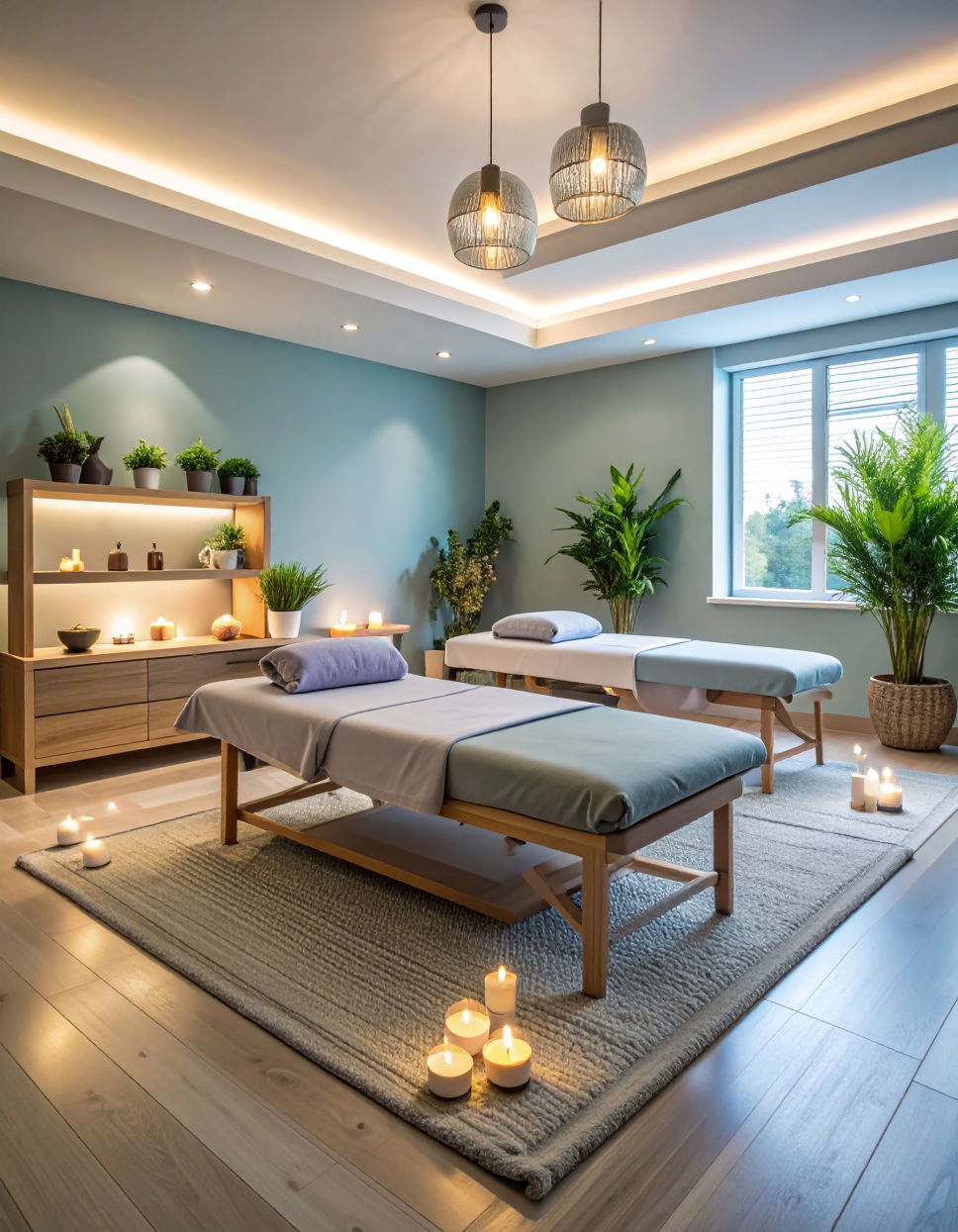
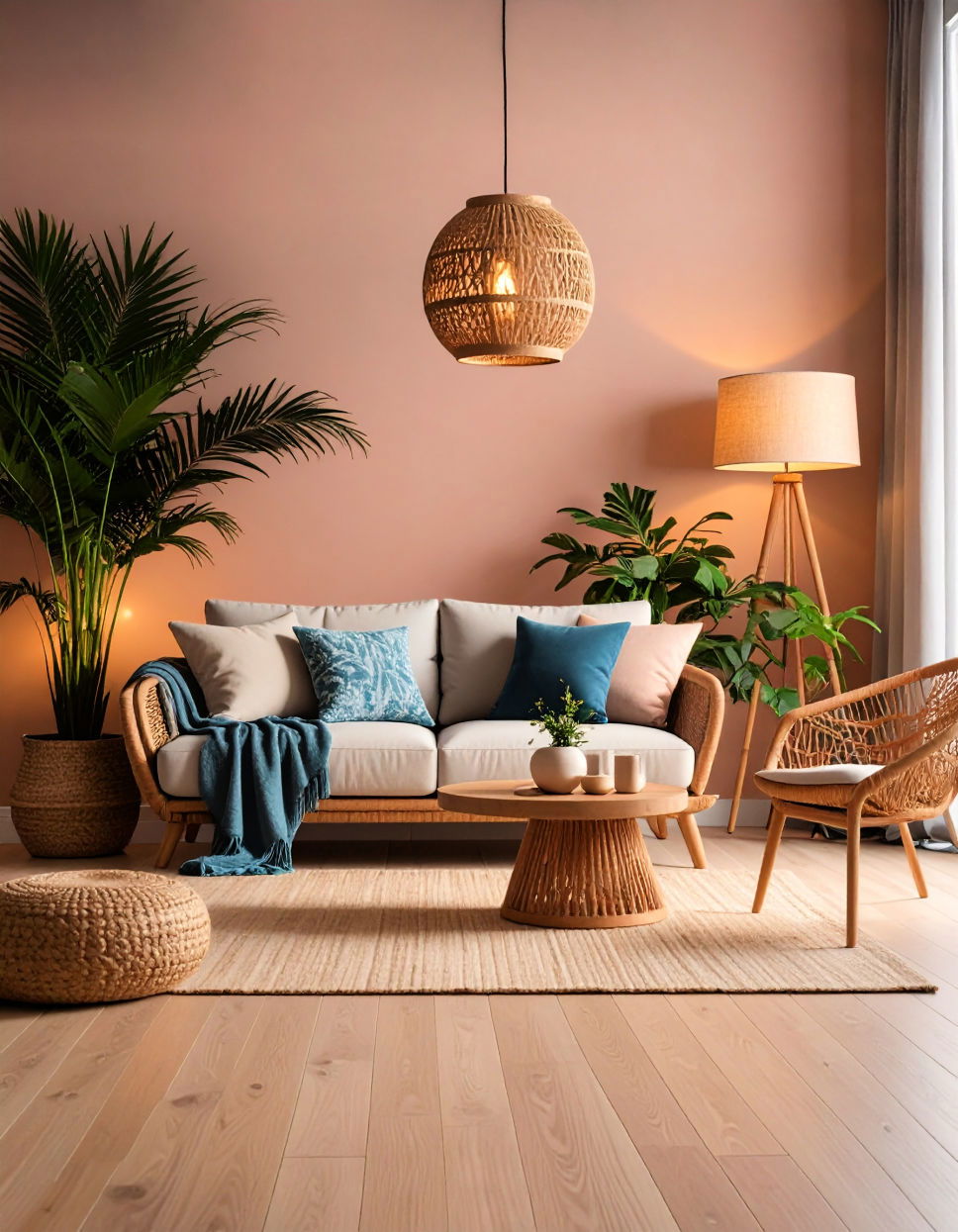


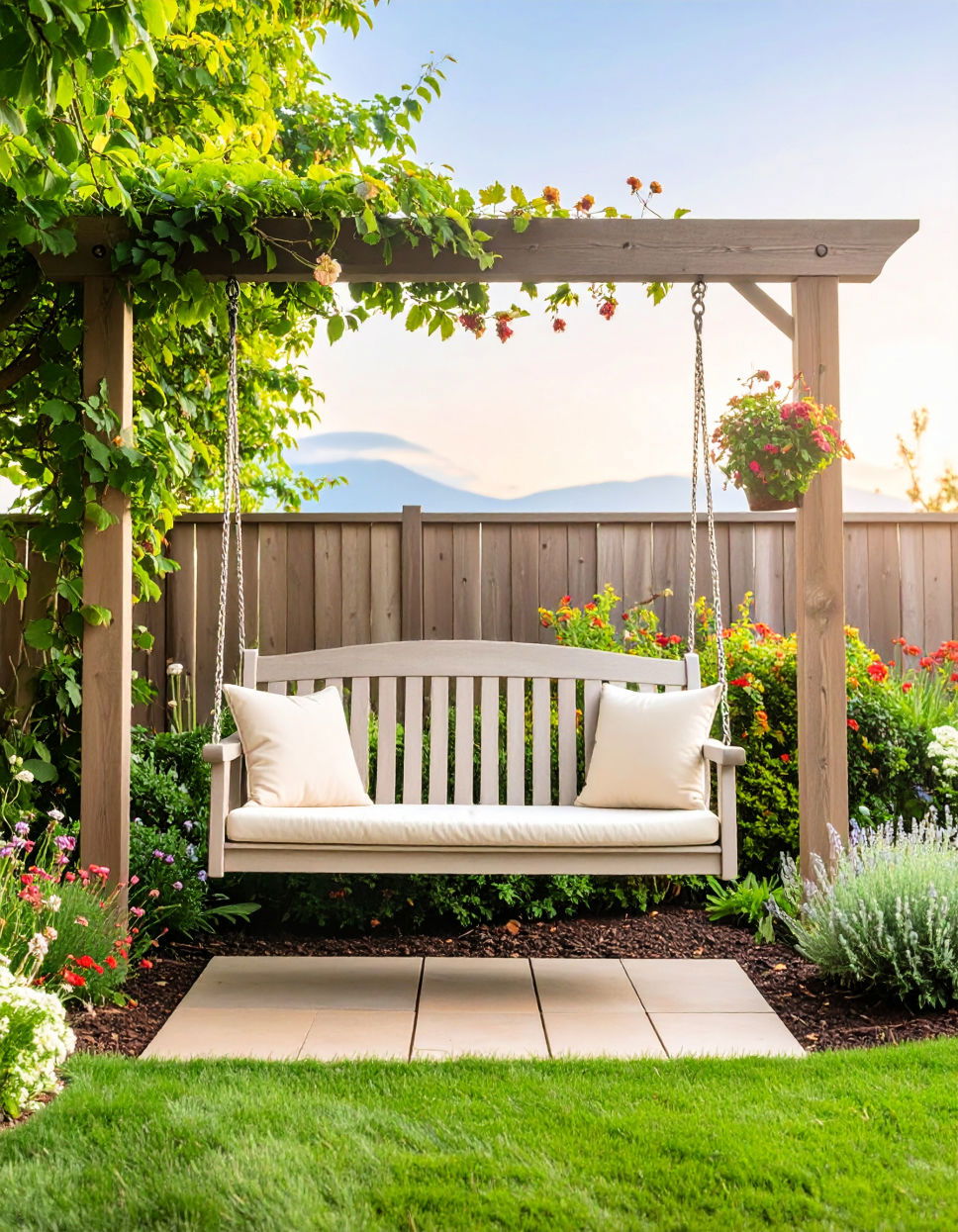

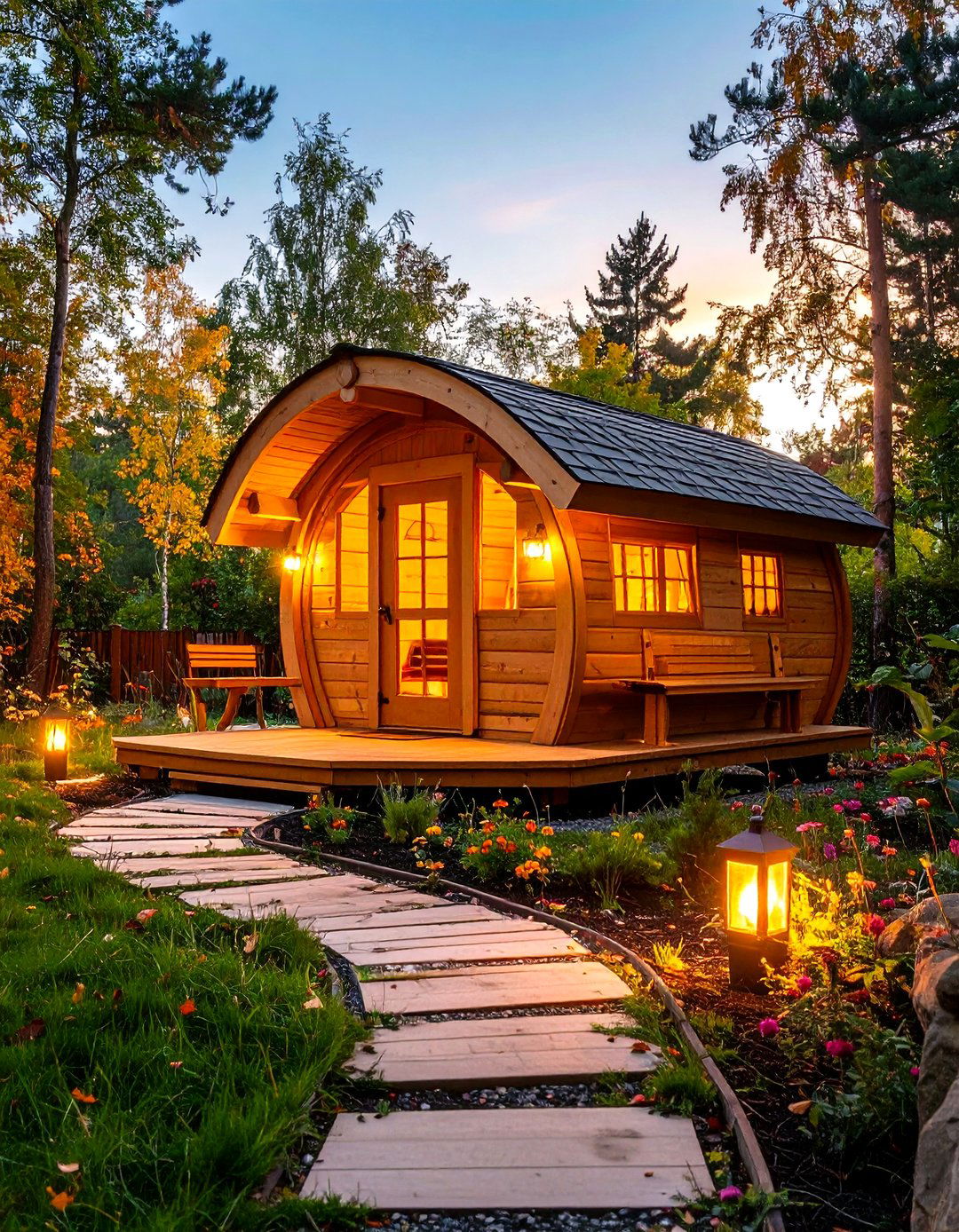

Leave a Reply